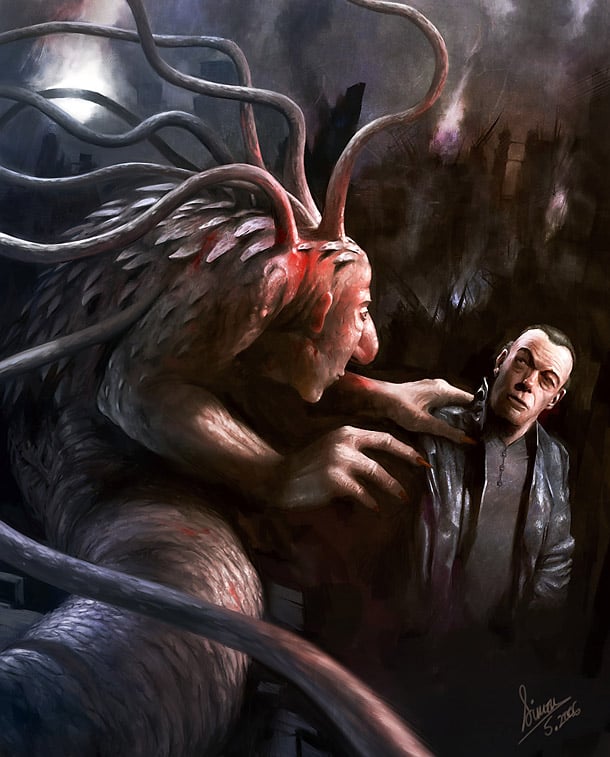100 new ways to paint!
• Tips 01-19. Ideas and philosophy.
1) Philip Straub – Artistic legacy
“For me it’s about leaving an artistic legacy behind, a body of work that will hopefully inspire young artists and entertain people well after I’ve passed on”, explains Philip Straub. “With each painting I create, I try to improve my skill set and add another piece to the puzzle that is my overall body of work. For me creating art isn’t a job, it’s a way of life, an expression of who I am, and a way for me to communicate to the world well beyond the limitations of language.”
2) Marta Dahlig – Escape from reality
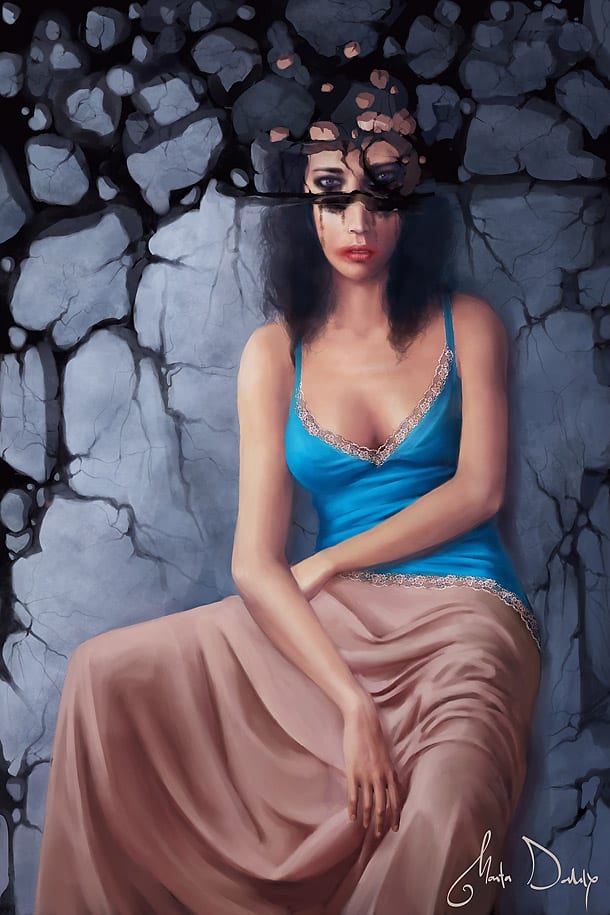
Art can be a personal matter to many artists, and we all interpret it differently. Marta Dahlig creates art to escape from reality. “It offered fulfilment and consolation. Whenever I felt down, I sat down and painted whatever was in my head. Painting is also a wonderful way to express feelings, release hidden sorrows and frustrations. It’s an extremely intimate process, during which you share yourself with others, bit by bit revealing your soul in every painting.”
3) Lauren K. Cannon – Create worlds
Lauren K. Cannon create worlds and myths: “I’ve been obsessed with fantasy since I was a child, and that fascination has led me, like so many other fantasy artists, to create my own world and mythos to base my art around. Each image has a story to tell and a feeling to evoke. I approach painting as if they were dreams. I like to create things that are beautiful but also surreal and unsettling.”
4) Bill Corbett – Ignore trends
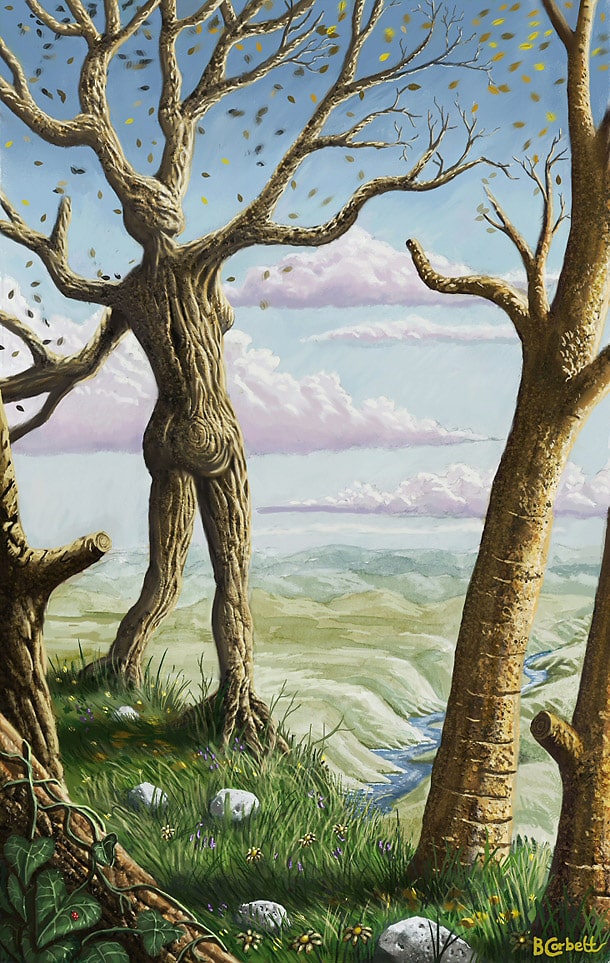
“Experiment with your own art and ignore any art trends.” Bill Corbett’s philosophy is that all things creative are to be expressive, and he explains: “I like to think that when it comes to some of my pieces I can express my feelings at the time, or convey an idea that I might have. I like the idea of putting my hands in virtual paint and attacking the virtual canvas!”
5) Sacha Angel Diener – Research is key
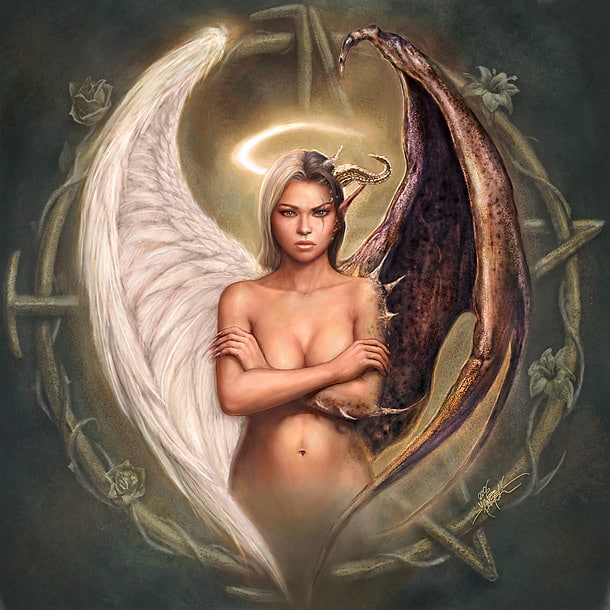
Knowing what you want to create is Sacha Angel Dieners advice. “You can never do too much research. I make lots of small sketches to get clear about all thinkable aspects of the piece I want to paint. Knowing what you approach lets you use the time way more focused. Internet brought the world in front of your doorstep, compare, know where you are, and keep on refining.”
6) Samantha Hogg – Add personal symbolism
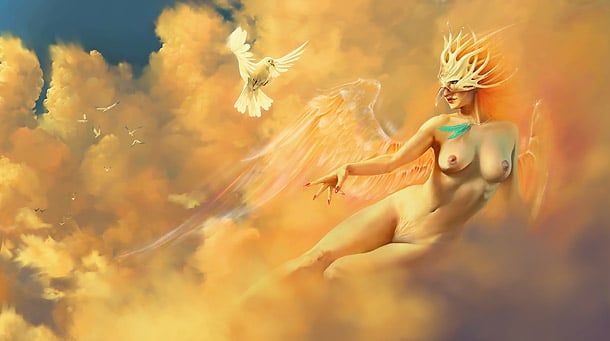
“It’s a fine line balancing between having self belief as an artist, and not being above given critique since one can affect the other, but when you master walking that tightrope, the improvement can quite astounding”, says Samantha Hogg. She also thinks that having personal symbolism in her art and to imprint her essence on a piece of art matters more than having a recognisable style.
7) Uwe Jarling – Always have, always will
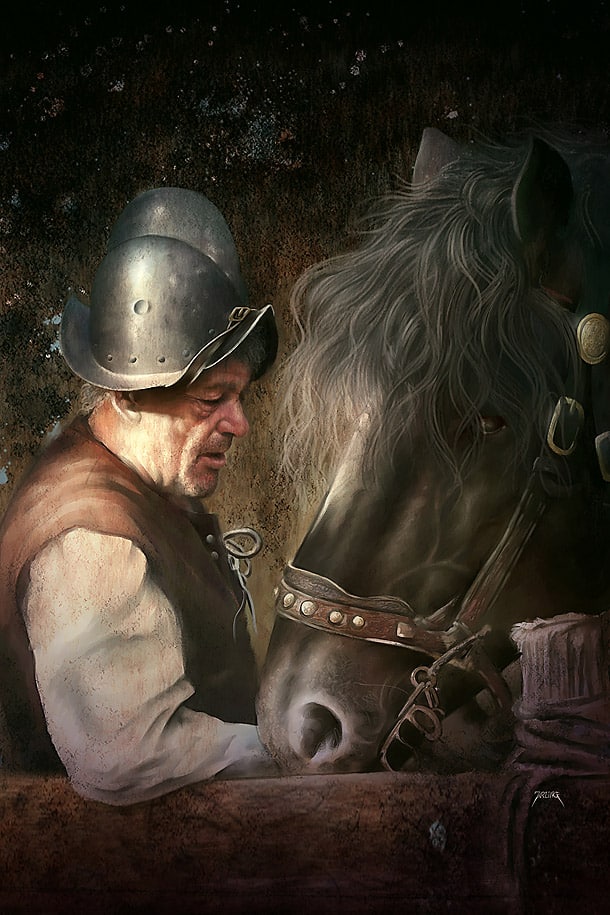
“It sounds like a cliché, but I do art because I always have, and probably always will do art”, explains Uwe Jarling. As long as art is your passion, the urge for becoming a better artist is something that will keep you going as you learn more and more. “There are many ways to earn your money easier, but I can’t think of another job where you can put so much of your own heart and love into.”
8) Michael Dashow – Use situations
Michael Dashow is focusing on creating artwork about people and their personalities and situations. “Characters in an emotional context really resonate with viewers. With my own artwork, I like to capitalize on humour and sweetness, while others choose from a different emotional palette. Don’t just pose your characters; place them into situations that give your art emotional impact and resonance. Keep in mind the wide range of emotions that are out there for you to use.”
9) Anne Stokes – Fantasy love
Anne Stokes enjoys working as a commercial artist as she enjoys the challenge of illustrating fantasy descriptions, creatures and characters. “I have always loved to draw and paint, so it is a dream come true to be able to earn my living as an artist. I have also always loved fantasy art and literature and I am inspired to bring these worlds a little nearer to reality by creating paintings of the fantastical.”
10) Martin Bland – Reflect life
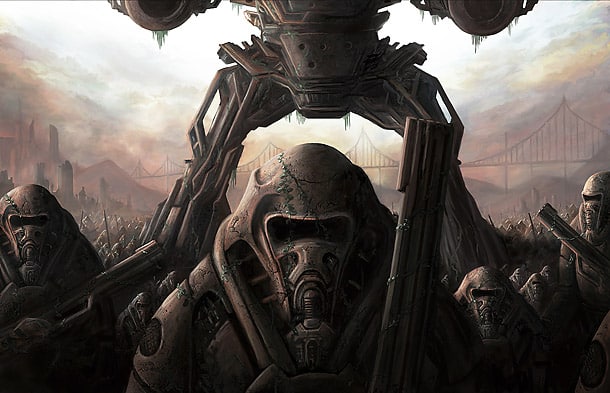
“To me, art should reflect life, be connected to reality”, says Martin Bland who always approaches his work with this in his mind, trying to find beauty in uncommon situations, relay a world which could actually exist rather than a pure fantasy approach.
“I love to combine dark and unwelcoming imagery with a message of hope or beauty, try to tell a story without telling too much of a story, leaving a lot open to subjectivity.”
11) Cris Griffin – Be selective
Cris Griffin is juggling mothering and wifery that curtails her creative time which makes her very selective with the projects she chooses. “My art time is so precious I only take on projects that reward me artistically, financially, and stretch my talents. No offence intended, but I could never be one of those artists who churn out dozens of near-identical fairies or vampires or dragons. Every new project must flex a different muscle.”
12) Oz Haver – Observe the mind
If you observe Oz Haver’s art, you are actually observing his mind. “Since my early infancy, my artwork has recorded my thoughts, dreams, life experience and spirituality through a carefully woven group of personal symbols and other visual games. It’s the ultimate intimacy and for me it’s always very personal. Symbols and the surreal are always present in my art.”
13) Aly Fell – Reveal something of yourself
“Every picture is like a 2D version of the Jerry Springer show; it’s a personal document, and a revelation, be it of an angel, a dockyard or a rubber chicken factory; it says ‘something’ about every artist who makes a mark”, is Aly Fell’s thoughts on the subject. “If I didn’t draw or create images, I genuinely struggle to think what else I’d do; it’s about revealing something of yourself.”
14) Levente Peterffy – Never stop
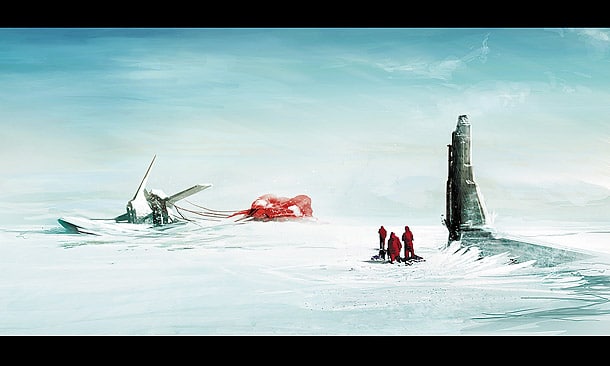
“I’ve always dreamt of fictional worlds where one can simply disappear in thought, mood and atmosphere, something that takes your mind away from the real world” explains Levente Peterffy who creates his amazing worlds to share his visions with others. “My philosophy is if you love doing something, don’t stop doing it, and don’t let people decide for you.”
15) Simon Dominic – Impatient creation process
Simon Dominic says that he is impatient and likes to see quick results, and digital art lets him achieve this. “I find the process of creation very fulfilling and I also need something I can look back on and say, I did that. I like to inject some originality into my work, maybe to counter the traditional clichéd associations my chosen genres suffer from.”
16) Julie Dillon – Fragments of dreams
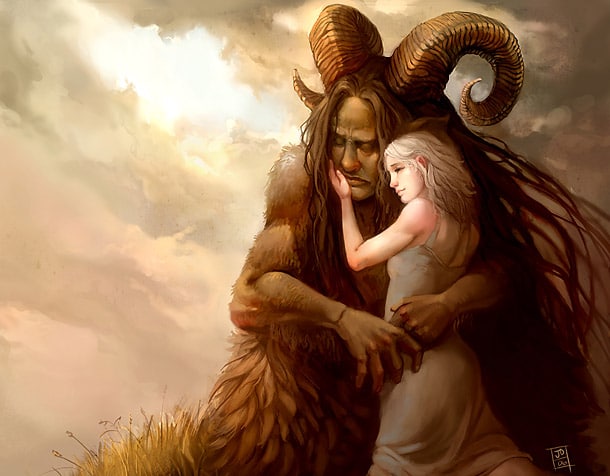
Much of Julie Dillon’s latest work has been done for commercial purposes. She tries to find time to work on her own projects. “I’m not always trying to express literal things, rather impressions of my surroundings, and the fleeting moments and ideas that are difficult for me to verbalize. I don’t always have a particular story to tell, but rather more bits and pieces of a larger, broader narrative, like fragments of dreams.”
17) Linda Tso – Create beauty
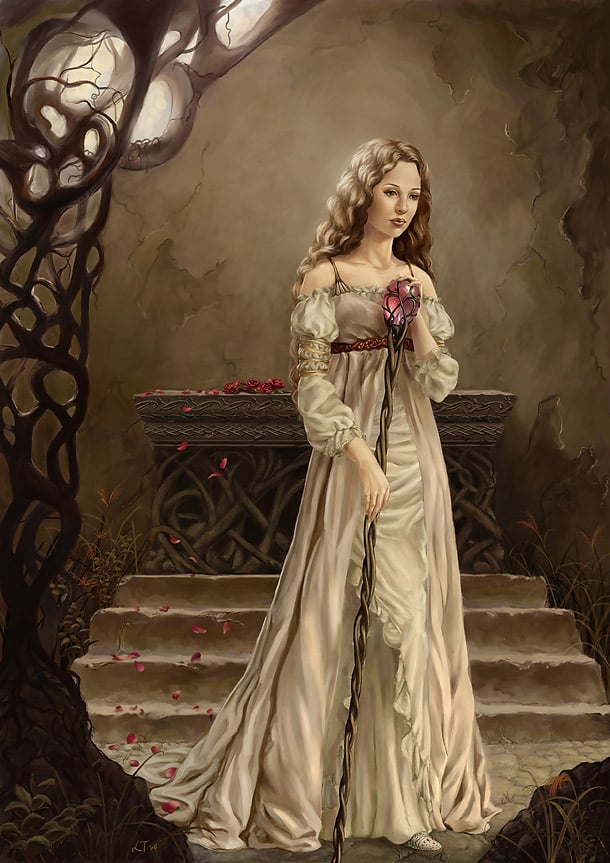
“I am an artist because I enjoy doing it!” Linda Tso is attracted by the visual beauty of things, and finds it rewarding being able to create beauty. “Working as a professional artist can become tiresome sometimes, with one deadline after another. You just need to think about why you loved it in the first place and you will be able to keep the heart and soul in your work.”
18) Rebecca Kimmel – Stepping stones
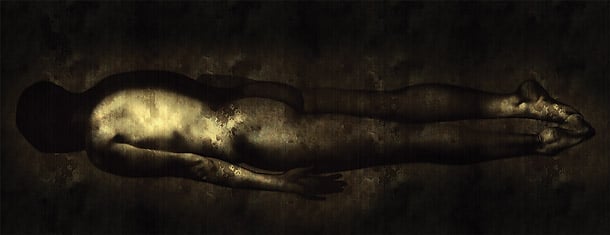
“I view my work as part of a continuum where each piece is an accumulation of what I’ve previously learned, and a stepping stone to the next body of work,” says Rebecca Kimmel who recently exhibited digital figurative paintings for her MFA Thesis Show, “Palimpsest”. “A palimpsest refers to a document on which words have been written, scraped away, and rewritten. I see a palimpsest as a metaphor for how an artist is trained and undergoes metamorphoses.”
19) Jonny Duddle – Express yourself
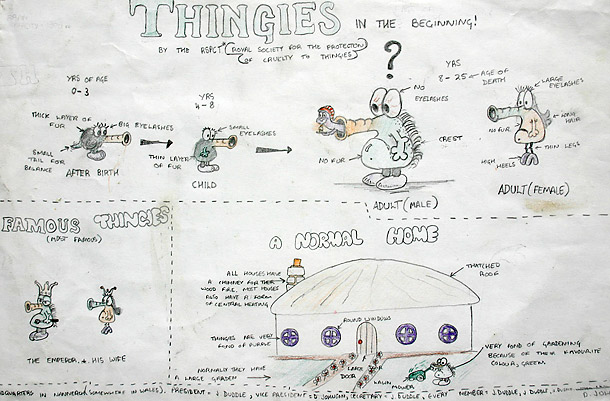
When Jonny Duddle was a kid, he wanted to be a Spitfire pilot or an artist but had to settle for drawing as propellers had been replaced by jet engines. “I draw because I want to express myself. Thirty years ago, I’d draw on scraps of paper, lying in the back garden, supping lemonade with my spaniel asleep at my side. Nowadays, I do it for exactly the same reasons but I’m lucky enough to get paid.”
• Tips 20-39. Inspiration
20) Andy Jones – Check the competition
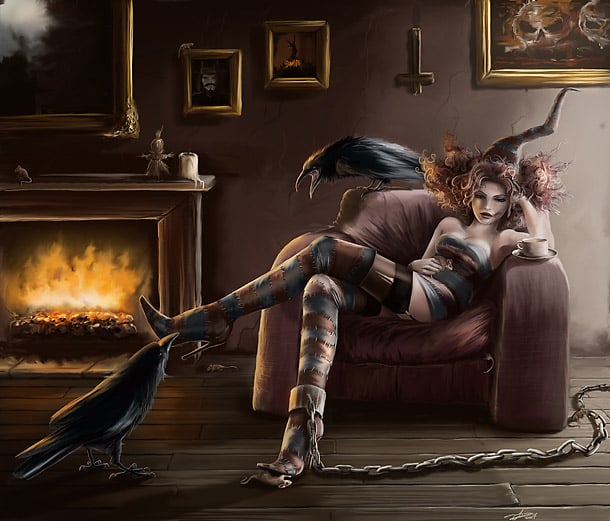
Besides music, films, books and even dreams, Andy Jones’ main motivator is seeing other artists’ artwork, especially when it leaves him floored with brilliance. “I always feel I have to step up my game in order to keep up with the whole digital art scene. One day, when I grow up, I will be as good as some of those kick arse artists!” Looking at the competition will keep you inspired.
21) Marta Dahlig – Observe
As most artists find their inspiration through music, movies and books, Marta Dahlig believes in not limiting yourself to that solely is a good idea. “It’s crucial to keep your mind and heart open. The best inspiration source is the surrounding world, so carefully observe everything around you like how people behave on the subway or at a bus stop, pigeons at a square, the way the wind blows someone’s hair, or the sun shining through the leaves.”
22) Lauren K. Cannon – Interpret ideas
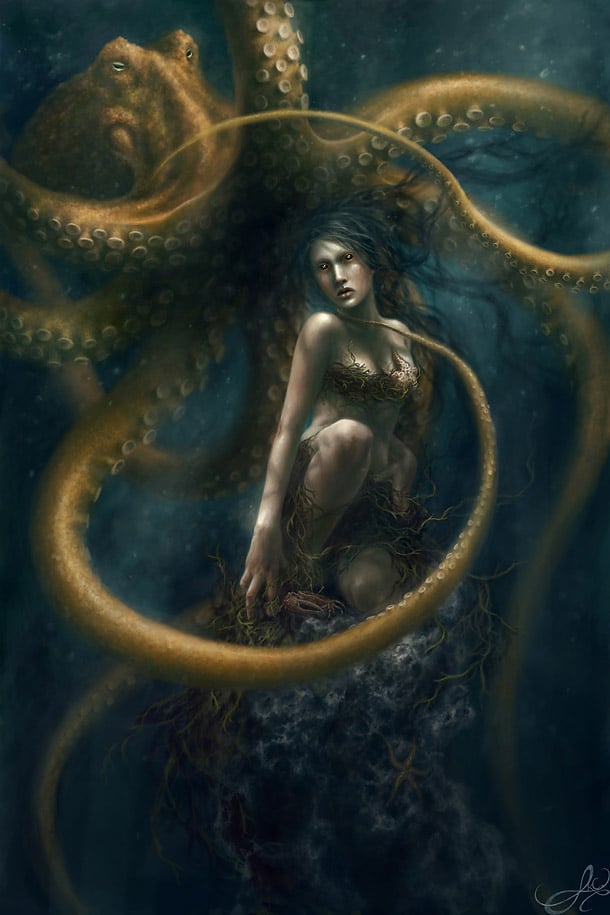
Lauren K. Cannon never disregards ideas that creep through her mind. Her advice is; “jot them down somewhere even if they seem incomplete. Anything can act as inspiration, and it does not have to be direct. My painting “Fathom” was inspired by Disney’s The Little Mermaid, though you’d never know by looking at it. No matter where you inspiration comes from, treat it with your own set of aesthetics. Interpret ideas instead of copying them.”
23) Bill Corbett – Inspiration everywhere
Bill Corbett finds inspiration in everything, and he does mean everything! “It’s important to find the artistic value in all things no matter how mundane they may appear. The majority of what I see, feel, and experience gets stored away in my head ready for the day that I’m ready to express it; it’s an instinctive part of being an artist. Keeping a sketchbook and pencil or a mobile phone with a camera is a good idea.”
24) Natascha Röösli – Use your mood
“It’s always good to paint if you are in a special mood yourself” says Natascha Röösli. “Be it sad, happy, or excited – all of those emotions will show in your paintings in either colour choices, composition or textures. You might not even know or realize it yourself. It’s probably a cliché but believe me, if you look back at paintings you made a while ago you will notice certain aspects of your mood incorporated and indirectly influencing your main inspiration.”
25) Samantha Hogg – Everyday stories
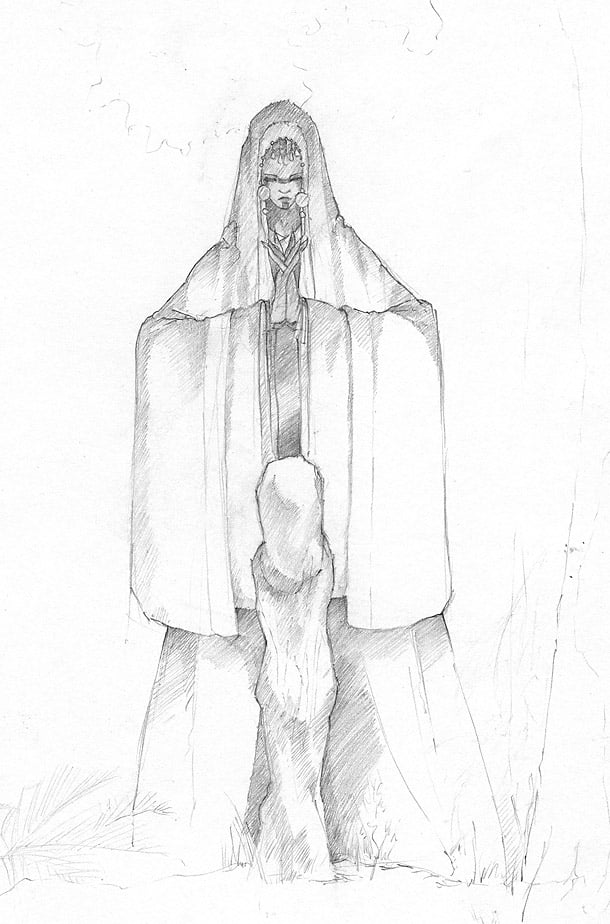
According to Samantha Hogg, attaching stories to everyday scenes you get glimpses of can be a great way to kick-start the muse. “A man at the bus stop suddenly becomes an intergalactic missionary waiting for the alien to show up. A rundown train station becomes a post apocalyptic headquarters for a team of cyberpunk ninjas.” If this doesn’t do it, then the stock art section at deviantART is a favourite haunt for finding inspiration.
26) Uwe Jarling – Doodle down ideas
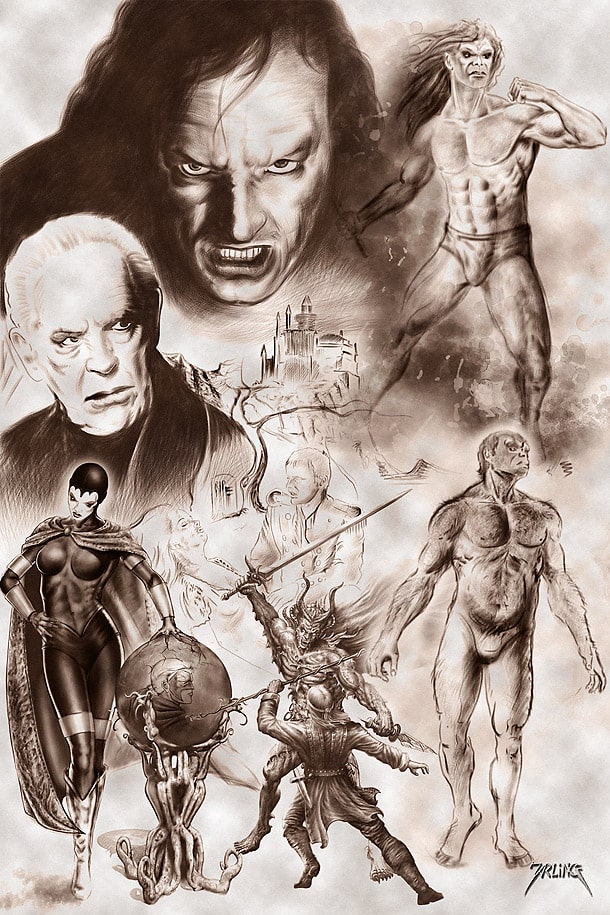
Uwe Jarling also gets his inspiration from everything around him, from movies to nature. “You just have to make sure you always have your sketchbook handy and do a quick doodle to catch that idea that came up your mind. If you are exclusively sketching on the computer and not on paper, a pressure sensitive graphic tablet will help if you still prefer the look of a good old pencil sketch.”
27) Jennifer Thomas – Compile, combine, create
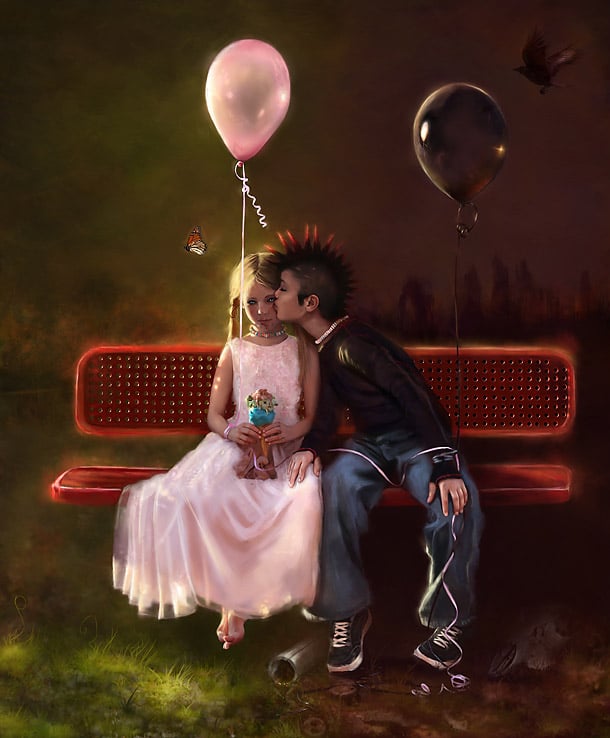
“I’ve learned that every random thought that pops into my head on any given day, is worth writing down somewhere (in my case I try to keep my journal full of zany ideas)” explains Jennifer Thomas. If you don’t write them down, you’ll lose them, and you could potentially be losing a really novel painting idea. Compile, combine, and create with those ideas that are in essence, you, and your work will become more interesting.
28) Anne Stokes – See how things really are
As most artists, Anne Stokes keeps her eyes on all kinds of things around her, but colours in particular will catch her eye. “Sometimes a shadow can have a lot of colour in it. It is important to learn to see things as they really are not what you think they may be. For example a shadow may not be a dull grey shape you would assume it to be but a deep blue/purple tone.”
29) Martin Bland – Convey ideas
It’s getting your ideas out onto canvas that’s important. Martin Bland thinks it’s tricky to convey an idea without having a good grounding in art, and therefore is practise the key. “You need to feel comfortable sketching and seeing your sketch correctly projected as a concept. Speed painting or gestural sketching is a great way of training yourself to get ideas out quickly.”
30) Henning Ludvigsen – Unconscious trends
“I have plenty of places to look for inspiration, even though the actual ideas for a painting seem harder to find,” says Henning Ludvigsen. “I believe that most artists are somewhat affected by other artists and ongoing trends going on around them, even unconsciously. I call these art-trends, and this is also where I find my inspiration by looking at old fantasy masters and at the galleries of artists that I admire.”
31) Cris Griffin – Believable fantasy
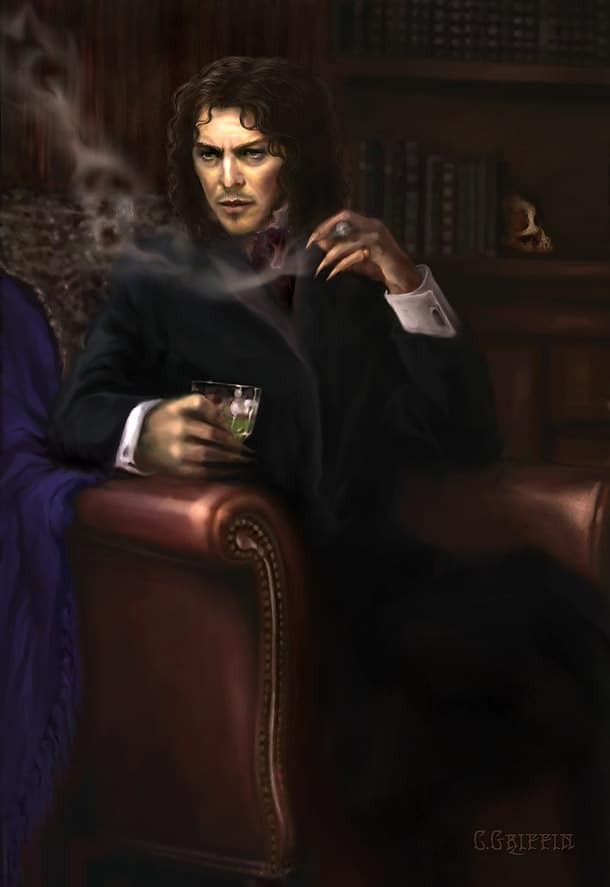
The humanoid, face is Cris Griffin’s foremost inspiration, in all its character, variety, and nuance. She comes from a tradition of realism, and finds challenge in making her fantasy portraits believable. “My angels must wear garb that accounts for the wings. My elves must have that preternatural glow. My vampires should reek of the predatory instinct. Accomplishing this, without the regular trappings of pointy ear and fangs is both a test and a treat. Observation + Research + Invention = Satisfaction!”
32) Oz Haver – Be personal
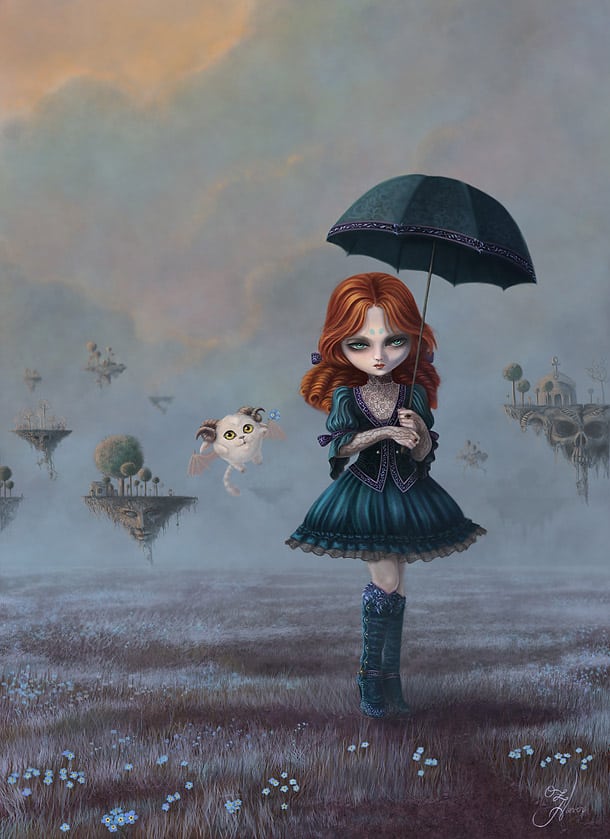
Oz Haver believes that he thinks too much, and for him to exorcise these thoughts from his head is by letting them pass through onto his artwork. “I have a large quantity of personal and archetypal symbols to translate into visuals the chaos that is always present in my mind. When the muses visit, pay them attention: use the moment and try to be as personal as possible.”
33) Aly Fell – Everything is inspiration
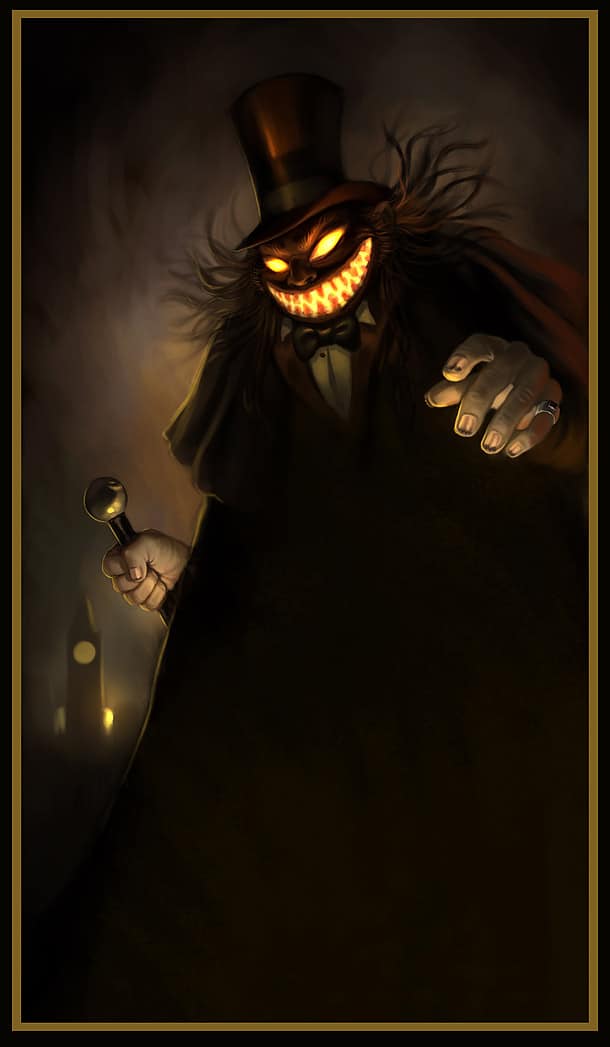
Aly Fell thinks of artists as a little paranoid as they are always watching and questioning things, whether they realise it or not. “If you wish to represent a world in your art, then surely there is some kind of heightened awareness of things going on. Everything is inspiration; everything is somehow worthy of representation in some way. It doesn’t have to be world problem solving! Of course, some desires have more value, but they all come from the artists’ passion.”
34) Levente Peterffy – Channel your inspirations
Levente Peterffy can find mood in a piece of beautiful music, but if he is looking for atmosphere, he can look at a sunset. “The inspirations are many; the important thing is to channel it once you see it. When you do see it, try to remember what made it so inspirational. For instance; a clear blue sky at dawn where you have soft gradients of orange, purples and pinks.”
35) Simon Dominic – Inspiration finds you
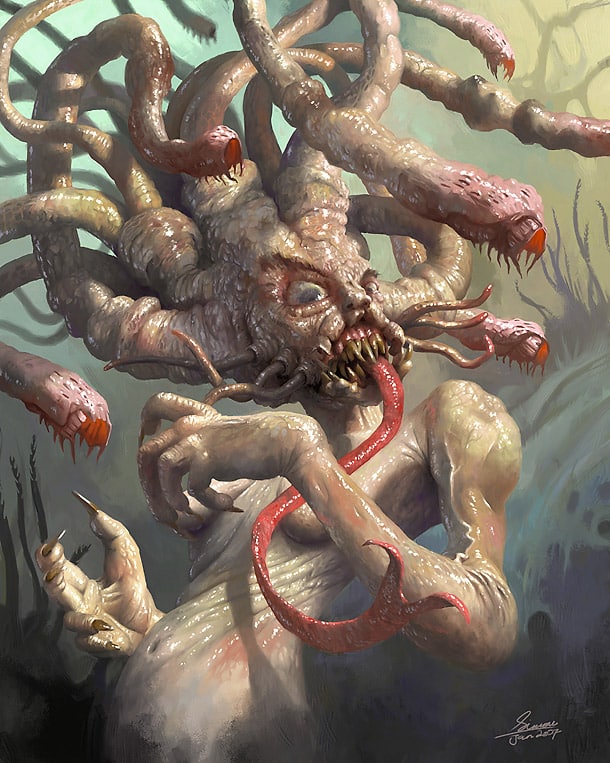
Cliché alert; Simon Dominic is convinced that you don’t find inspiration, inspiration finds you. “The surest way to end up with a head empty of ideas is to consciously try to think them up. I’d love to tell how I’m inspired by poetry or summer strolls or humbling experiences in creaking oaken art galleries, but I’m not. Having said that, one of my earlier paintings was inspired by a dead dog… I’ll stop there.”
36) Julie Dillon – Stack up
Julie Dillon’s tips is to stack up on all sorts of ideas; “write down or sketch out anything that catches your interest; even if you don’t know what to do with it at the moment or if it isn’t fully developed, you can set it aside and come back later when the idea has had time to simmer. A literal interpretation often doesn’t quite cut it and I need to collect smaller ideas before understanding how to approach something.”
37) Linda Tso – Experience reflects art
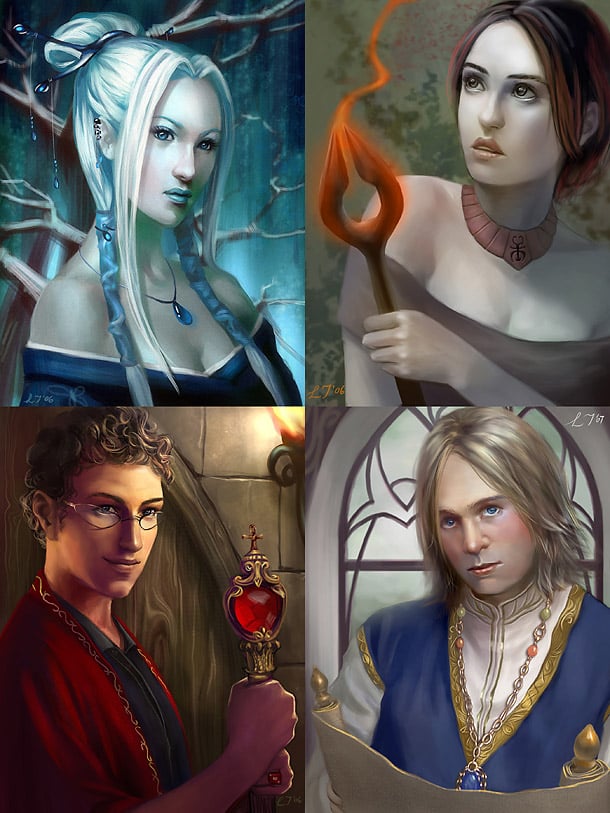
Find inspiration around you in everything, is Linda Tso’s take on the subject. “Read books, go to art shows, movies, listen to music, meet people etc. Have an interest in other disciplines in art, not only what you specialize in. Your art, what you put out really does reflect your existence, so the more experiences you have in life the richer your art would become.”
38) Jonny Duddle – Indirectly inspired
Jonny Duddle believe that every artist has a different experience of the world, and however directly or indirectly, this does inspire our art. “My Granddad told me fantastic stories about his childhood in the grimy streets of Salford in the 1920’s. If I wasn’t an artist I might consider writing them down, but because of what I do those stories have blossomed into an artistic project that relies on photographs, sketchbooks, stories and memories.”
39) Michael Dashow – Mine the humour of a situation
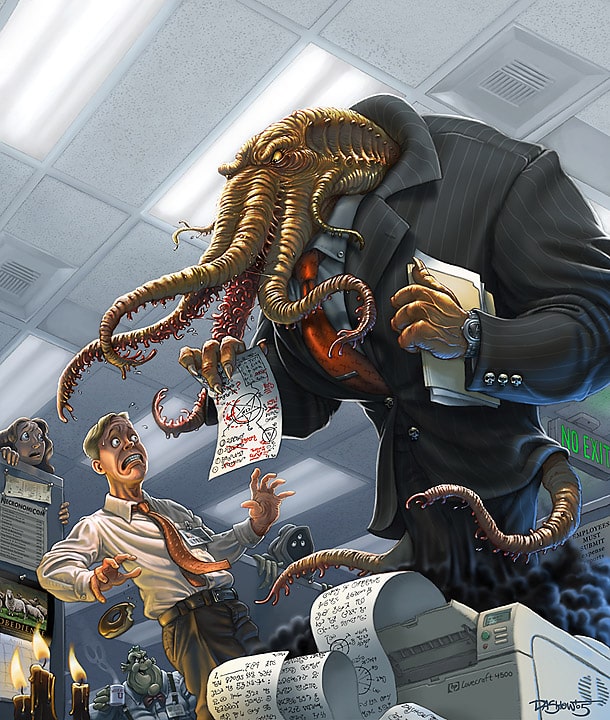
“In the genres of science fiction and fantasy, one takes science, technology and magic to plausible extremes”, explains Michael Dashow. “My own work mines the humour of a situation by taking it to an illogical extreme. This kind of exaggeration underscores the emotions in each piece. For example, in my painting; ‘Wage Slave,’ the dread of a bad day at work is humorously accentuated by the fantasy and horror elements.”
40) Sacha Angel Diener – Change your vision
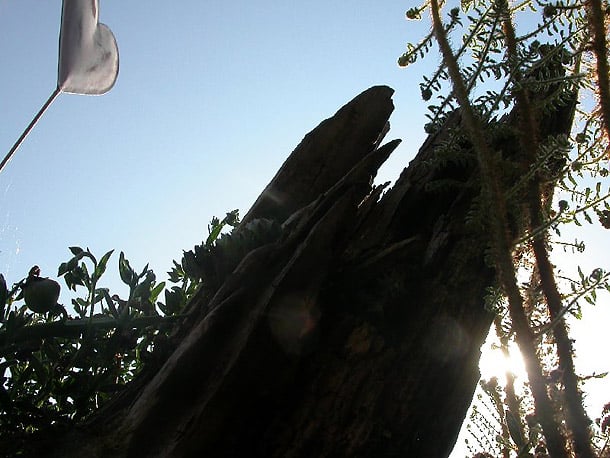
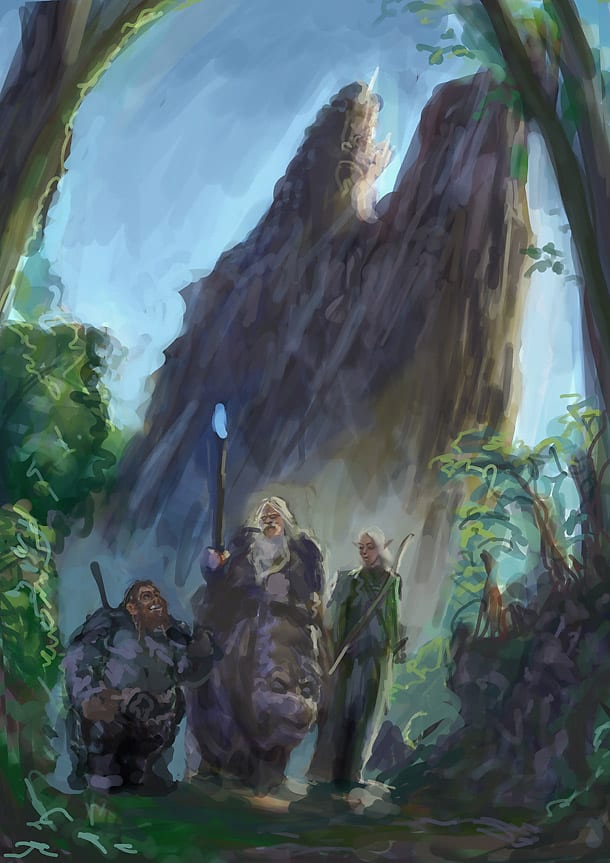
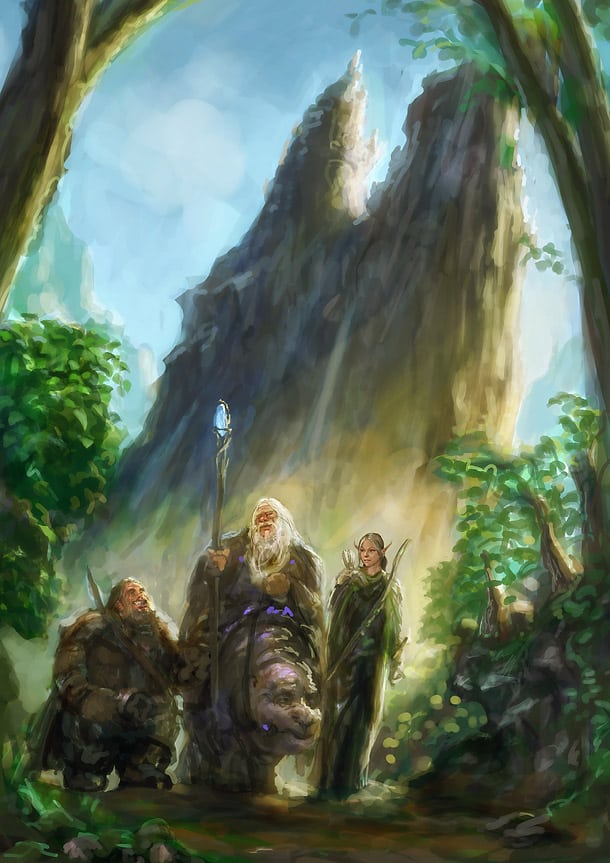
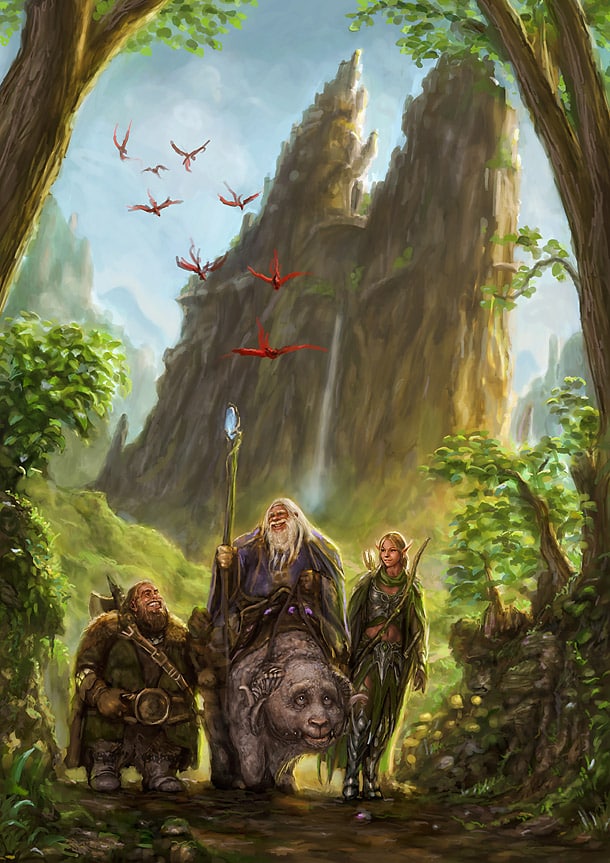
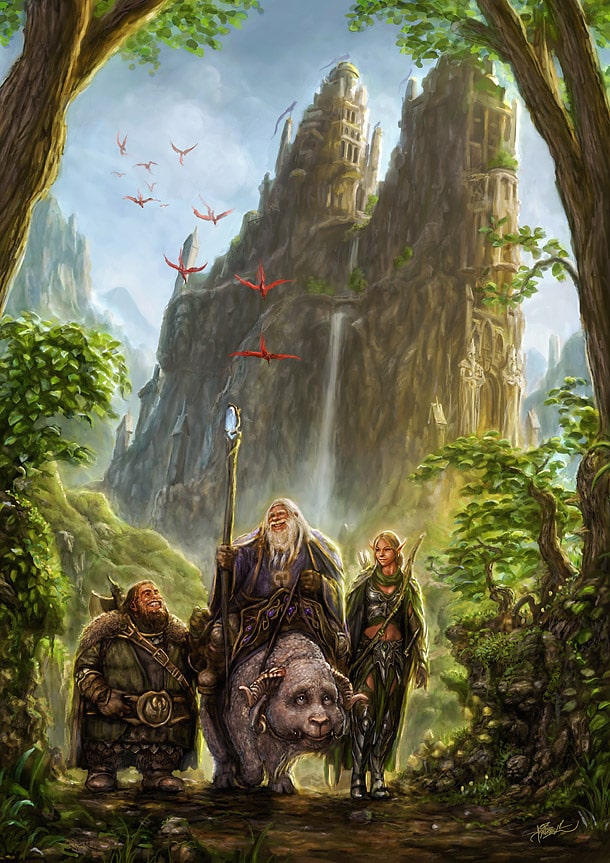
Sacha Angel Diener has got his “inspiration absorption switch” turned on all day, no matter where he goes. Things he sees on his way to work, books he’s reading, or even childhood memories can often trigger his inspiration which we see reflected in his amazing fantasy art works.
“It all starts with something given. Imagination is a gift that lets us create our worlds, sometimes, we see things in things and letting our fantasy lead us to a new painting.”
Sacha had a breakthrough to how he is looking at the world when he started doing 3D art some years ago: “Even a pebble or a snail house became fascinating – I could stare at things for hours to understand what makes it look the way it does. I tried to make out the geometry down to the smallest detail, and understand how it interacts with light, reflection, refraction and translucency. To create a convincing Illustration, you need to understand what you are creating.” And the rich amount of details to be found throughout Sacha’s work is a living proof that his artistic detective work has paid off.
“Sometimes I get carried away, and I love when I discover things in things. May it be staring at a mural texture, structures in an old piece of wood, or into the clouds, when faces or all sorts of creatures starts showing up.“
“Change your vision” is Sacha’s key-phrase to his way of harvesting inspiration in his very own back yard:
“Sometimes I walk around in the garden imagining I’m very small, just like an ant. Doing this will grow all dimensions into to huge epic places, and suddenly you find yourself in deep valleys where the stones has become mountains. Some of the mountains might appear to have old cursed caves, and a field of flowers becomes an endless enchanted forest. A piece of wood can easily become a huge ancient stronghold – magic and mysteries surround you.”
Sacha appears to be a living, bubbling source of inspiration, and doing so by simply taking a step back by looking at your surroundings in a slightly different way. “There are so many things that can inspire you, but most of all, the gift of having the eyes of an artist and getting so much out of your surroundings is something to be thankful for. Life itself writes many great stories and nature creates such richness of visual treasures. This is what I try to absorb day by day. I always have a sketchbook with me; again, if your day leads you to a great story, make sure you are ready to capture it.”
• Tips 41 – 65. Colour.
41) Marta Dahlig – Plan early
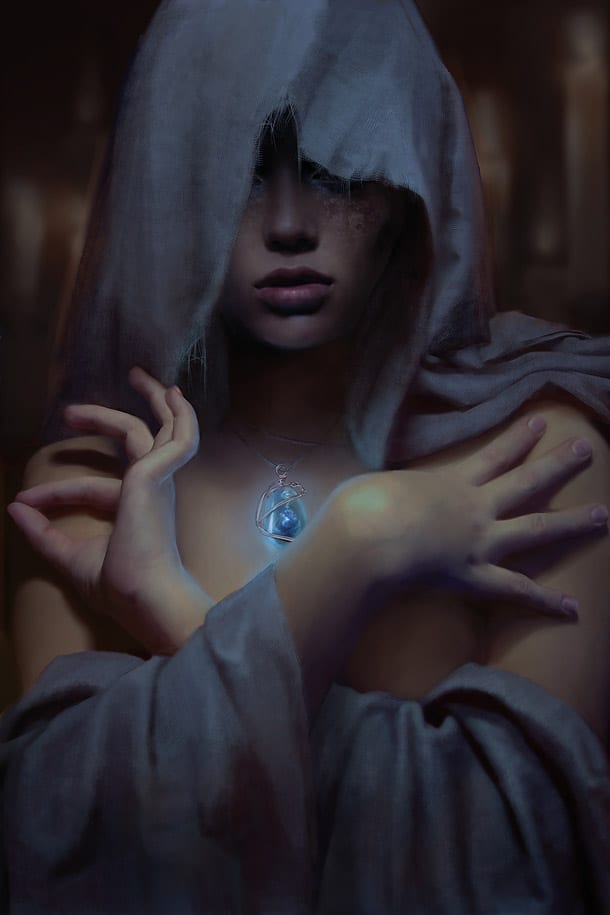
Choosing colours can often prove to be quite tricky, and according to Marta Dahlig, it’s important to think of a colour theme early, during the planning phase. “Think of themes suitable to the mood you want to convey. Experiment with contrasting shades, and whenever needed, use a colour balancing tool to help your inspiration.”
42) Andy Jones – Hold back
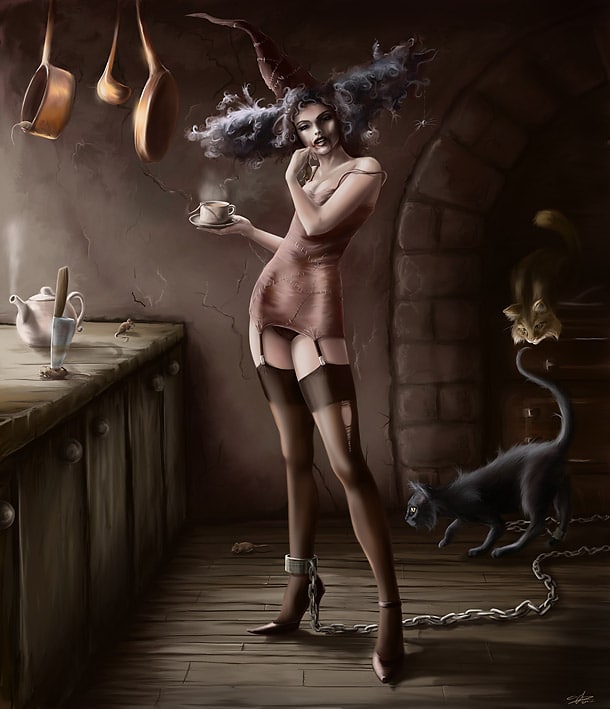
Andy Jones has learned to hold back on using obvious “in your face” colours. “I tend to think a lot more about the subtleties of colour and the non-obvious hues you get on seemingly obvious surfaces like rock, cloud or fabric. Not all is as it seems when colour is concerned.”
43) Lauren K. Cannon – Complex, yet simple colours
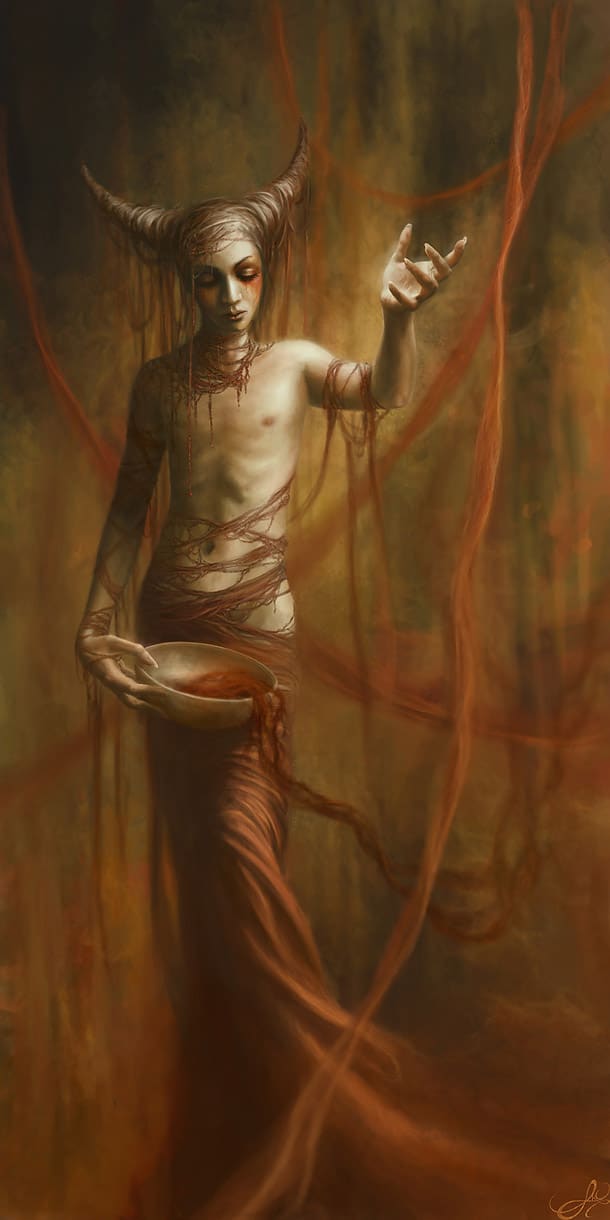
Lauren K. Cannon thinks that colours are complex; “it can be used in infinite ways, but also broken down into simple theory. One of the downfalls of working digitally is that it hides the way colour blends. More than anything else, colour dictates the mood of an artwork, so mastering it is critical.”
44) Bill Corbett – Limit your palette
Colour is probably the most important and misunderstood tool of the artist. Bill Corbett has learnt that the limited palette will cure all evils and helps when expressing particular themes. “I think the big problem for a lot of artists is knowing when to use and when not to use complimentary colour schemes.”
45) Sacha Angel Diener – complementary 3d
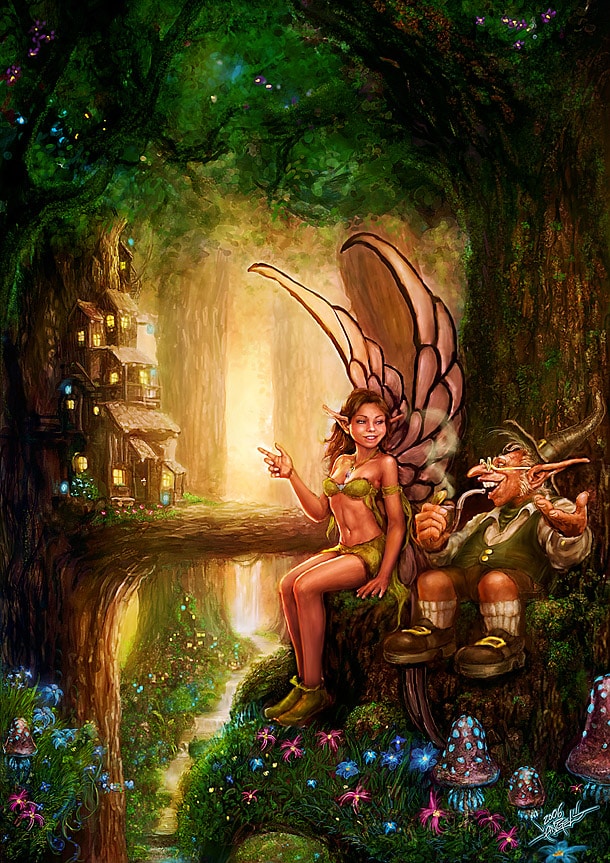
“A scene mainly lit by bounce lights, and a hard striking backlight (rim light), gives more possibilities than with just a purely direct lit scene. When it comes to environments; in a natural set of light, warm tones working versus colder tones give you usually give nice 3d effects, whilst light and shadow in complementary colours helps selling a piece” explains Sacha Angel Diener.
46) Samantha Hogg – Look at the ambient light
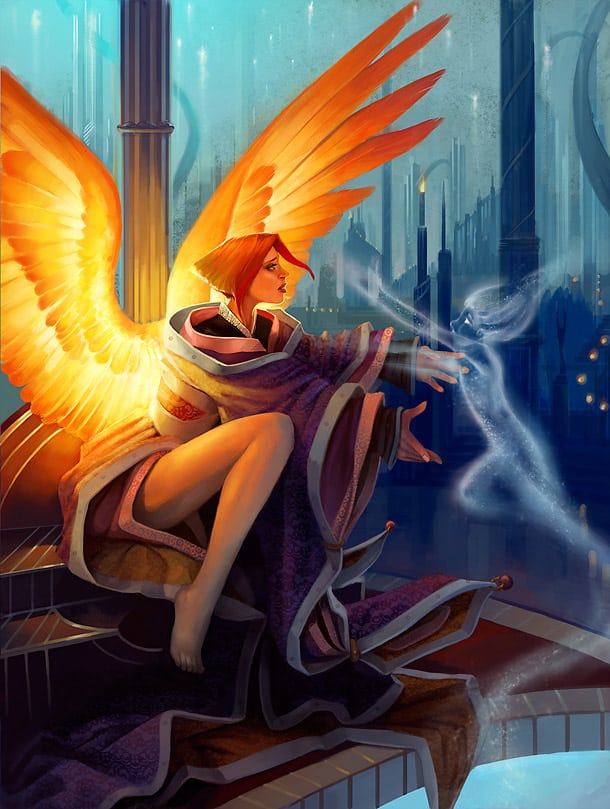
“Learn to see ambient light in everything around you” explains Samantha Hogg. “Colour is an optical illusion a lot of the time, what might appear yellow at first could be anything as diverse as green, brown or orange depending on what it is surrounded by.”
47) Uwe Jarling – Boring, important colours
Uwe Jarling doesn’t find colours theory much fun, but still thinks it’s very important. “Colour is something you really have to learn, you have to be sure what you are doing before you start getting your drawings coloured. Once you have it nailed down, forget about all you learned and paint from your heart.”
48) Jennifer Thomas – Know the basics
The best advice Jennifer Thomas can give to someone trying to attempt to conquer colours, is taking time to get familiar with the basics; everything else falls slowly into place after that. “Time spent on random palettes can be put into science of making great palettes that will change the emotional reaction from viewers.”
49) Anne Stokes – Colour interaction
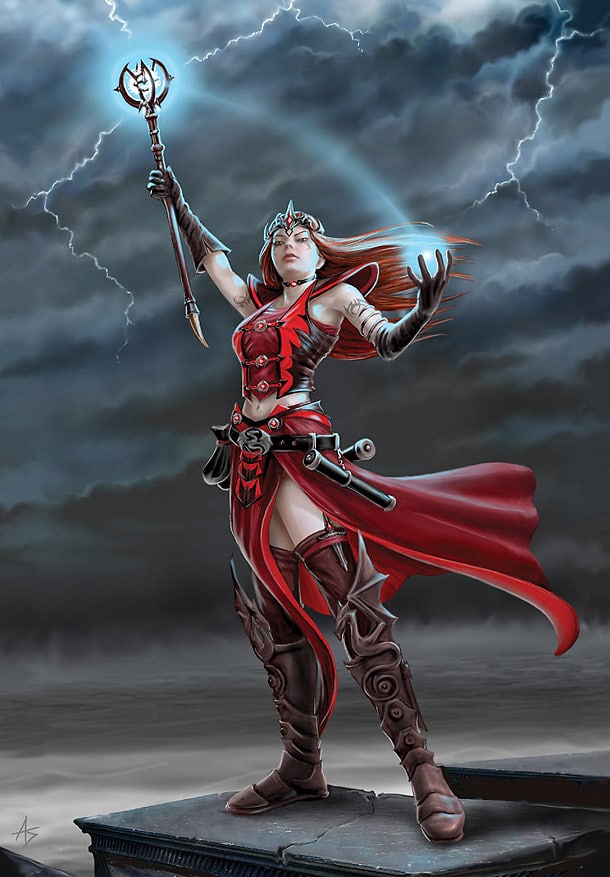
Anne Stokes thinks it’s is important to understand how colours interact with each other. “The same shade can look different when placed next to two different colours. An artist can use this to their advantage to draw attention to certain elements. On this example I set the bright red costume against a dull background to emphasise the red.”
50) Martin Bland – Lighting is key
Martin Bland thinks everyone struggles with colours, but it can be learnt by observing and learning basic colours theory. “Colour choices are paramount to a successful image, which is why it’s so difficult to get right. Training your brain to observe how colour affects everything around you, lighting is key.”
51) Rebecca Kimmel – Understand values
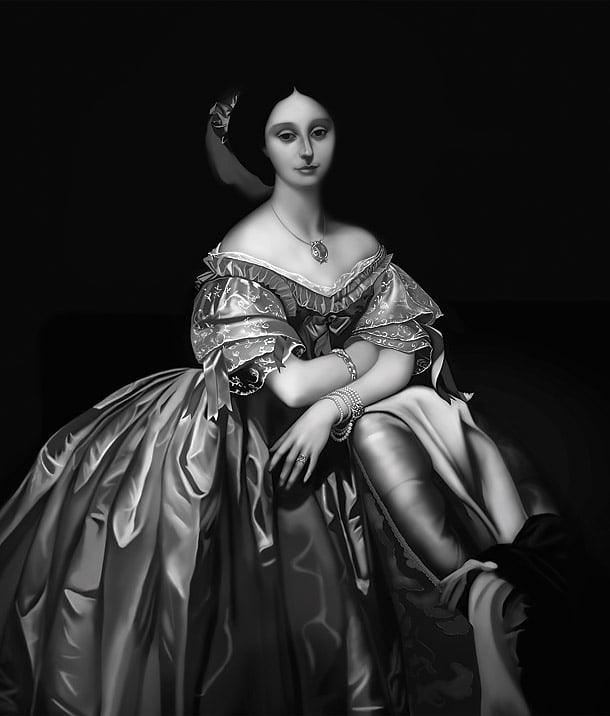
According to Rebecca Kimmel, beginning artists in particular struggle with colour. “This mostly due to lack of understanding of value, which dictates form over any other element. I recommend that anyone new to digital painting work first in greyscale. Colour must be understood in terms of its various properties of hue, tint, shade, intensity, and value.”
52) Cris Griffin – Colour lies
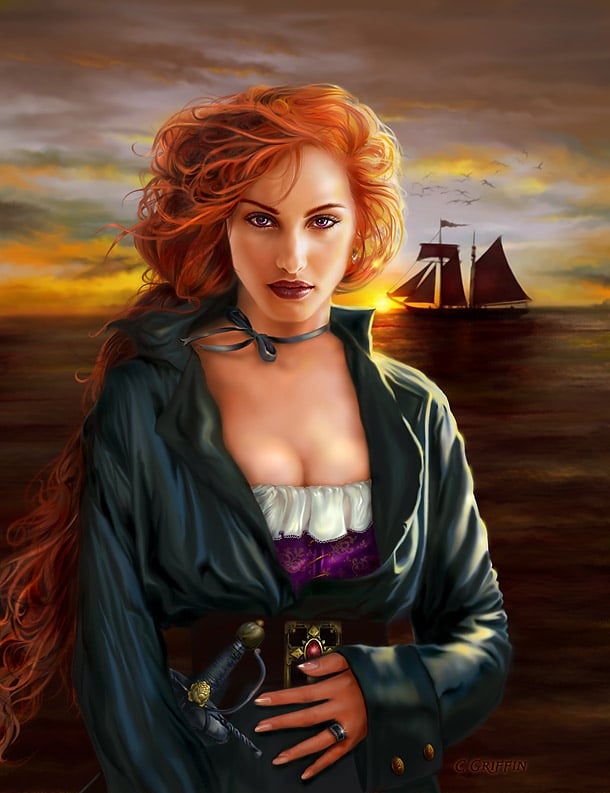
“Colour lies, it pretends it’s something its not, it looks different depending upon the company it keeps, and it elicits a psychological response unlike any other”, explains Cris Griffin. “Shadows are never truly black, highlights are seldom white. As artists, we must break the conceptual notion of perceived colour.”
53) Oz Haver – Colour formulas
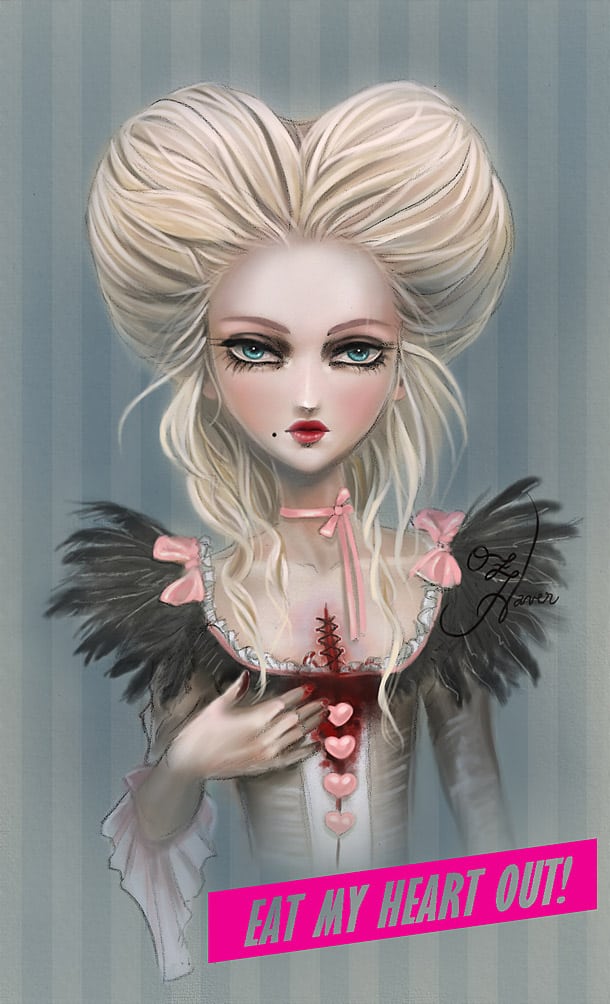
Oz Haver are using formulas when using colours, and he recommends learning them. “Always experiment; get out of your comfort zone. Forget that the sky is blue and the grass is green; sometimes the grass is gold and the sky is pink. You cannot learn if you do not dare.”
54) Aly Fell – Push yourself
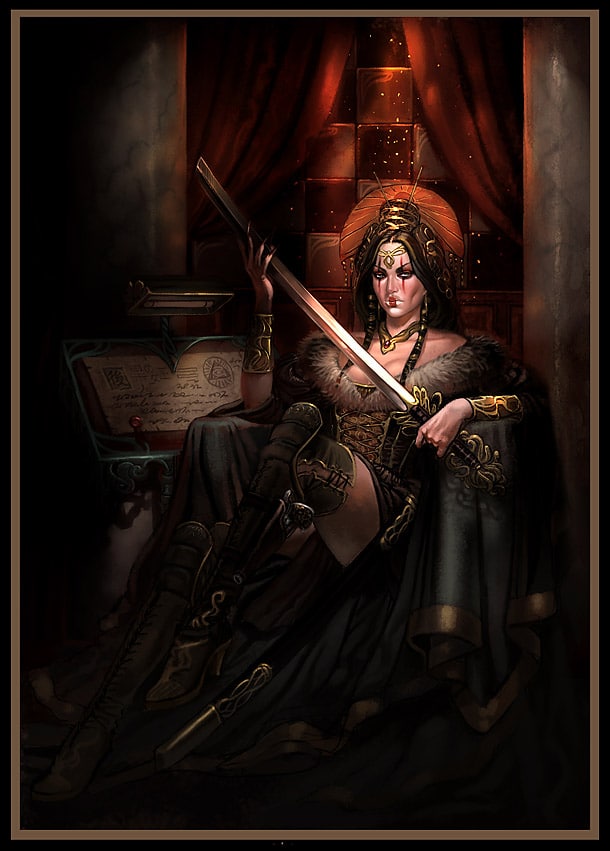
Aly Fell thinks that with colour, you should push yourself each time you use it. “Every time you make a mark, experiment with its value and saturation; colour doesn’t have to be what you see, it can be totally abstract, and could end up producing results that surprise you.”
55) Levente Peterffy – Objects are reflecting colour
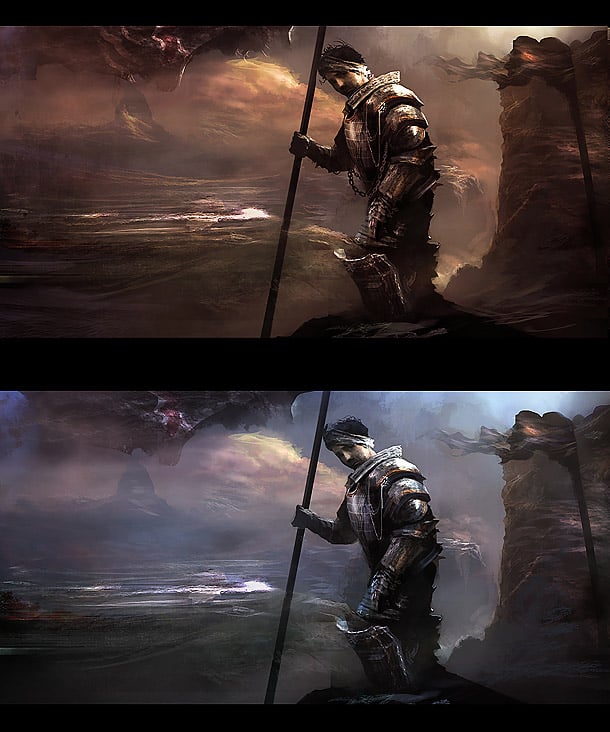
“In all scenery light interacts with objects. These objects reflect a certain colour and that reflection also interacts further with other objects in the scene and so on.” Levente Peterffy believes in simplifying even if colours are complex. Finding only the most important colours can establish a lot in a painting.
56) Simon Dominic – Don’t isolate colours
Simon Dominic thinks that some artists struggle with colour because they consider the colour of each object in isolation. “When different coloured objects are placed together they pick up reflected light from each other and their environment. Applying this concept to your paintings will lend them an element of naturalness and harmony.”
57) Julie Dillon – Start in greyscale
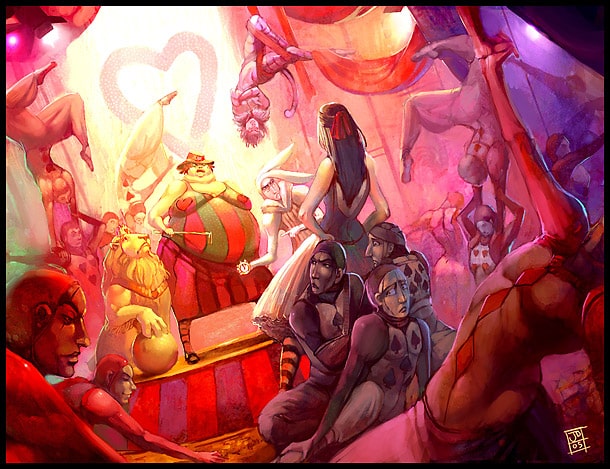
Julie Dillon recommends laying out the image in black and white tones first to establish form before tackling colour. “I personally find colour difficult at times because it’s hard to separate the actual colour of objects in a scene from what we think its colour should be.”
58) Linda Tso – Colours affects mood
“Colour can affect the entire mood of a picture”, says Linda Tso. “How bright or dark, how saturated, what is the dominant hue. Within a picture the “colour” of objects is all relative, and it’s worth keeping that in mind when picking what colour to use in a particular part of the picture.”
59) Jonny Duddle – Know that you don’t know
Jonny Duddle thinks that the more you know, the more you realise that you don’t know. “There’s no quick fix to make you a master of colour. It takes time, effort, study and experimentation. Every artist develops a different relationship to colour based on years of practice that becomes as distinctive as their signature.”
60) Michael Dashow – Disengage your brain
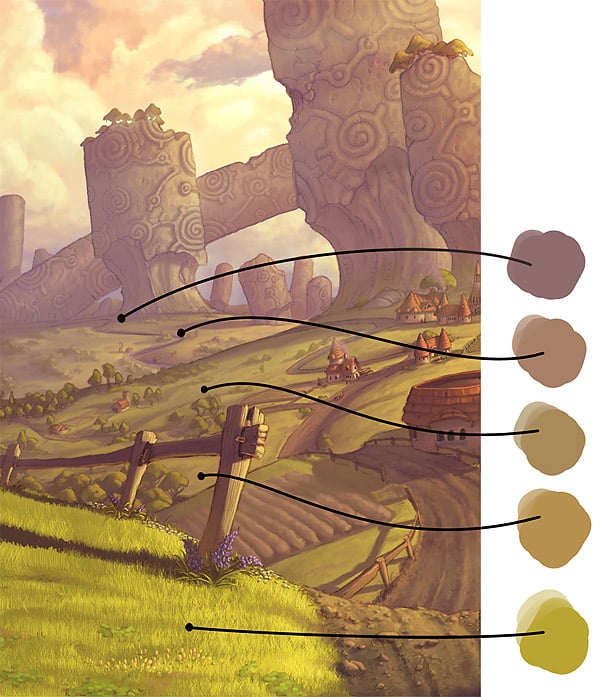
“When studying the world, try to disengage your brain and concentrate on what colours you really see”, explains Michael Dashow. “We know that the sky is blue and grass is green, but other factors – lighting, time of day, atmospheric effects – can make them look different that what your brain expects.”
61) Natascha Röösli – Make your own colour schemes
“Colour schemes are most often the distinct point that makes up an artists personal style. A lot of beginning artists study others colour schemes, which are ok for exercise but within time you should be able to create your own colour schemes and thus add to developing your own distinctive style,” says Natascha Röösli
62) Henning Ludvigsen – Grain and randomization
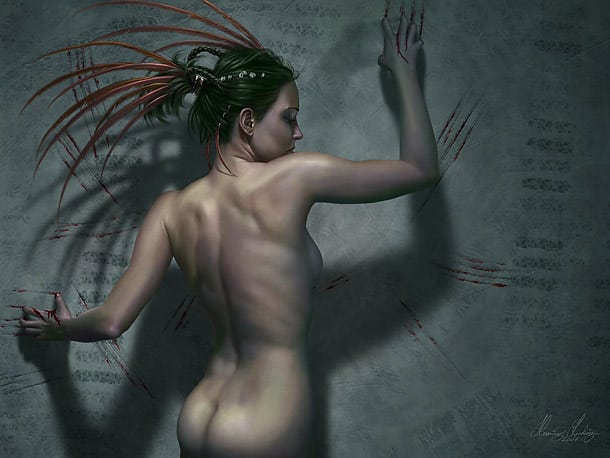
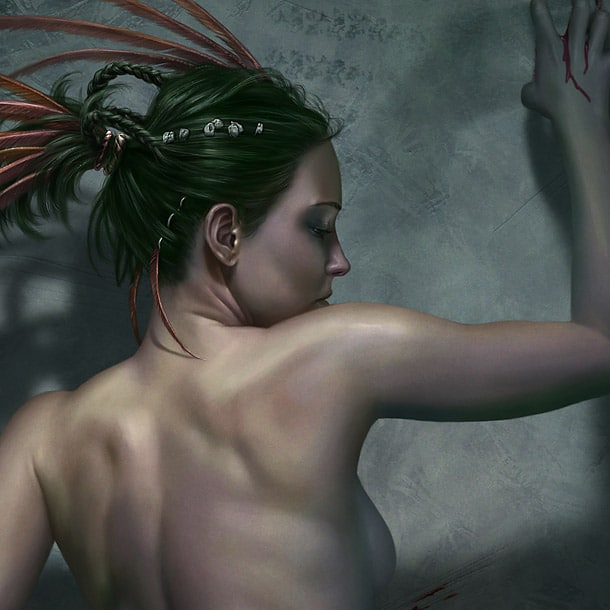
“Especially on my personal pieces, I try to mix my colour palette as much as possible to avoid monochromatic colours,” says Henning Ludvigsen. “I like to emulate realism, and I do that by adding noise and randomized colours to my surfaces. I love to study a surface of a painted piece and discover that it actually consists of all kinds of values of different colours.”
63) Philip Straub – The compositional tool
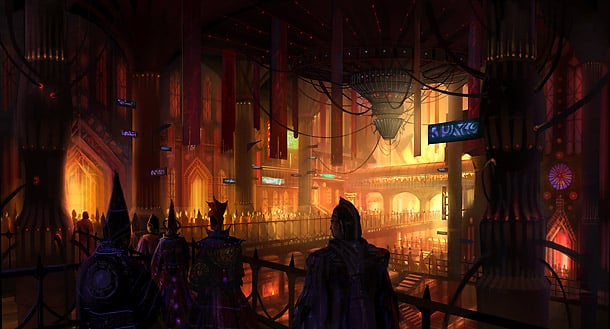
Philip Straub’s advice is that colour should be used as a compositional tool that helps establish depth, mood, and emotion. “Colour theory is very scientific and this may scare some artists away from attempting a full mastery of it. Studying the properties of light and the colour spectrum as well as reading up on the basics of colour theory will have an artist well on their way to adding colour theory skills into their arsenal of tools.”
64) Natascha Röösli – Emotional colours
According to Natascha Röösli; colour symbolism is something that you have to keep in mind. “Depending on culture or background, colours will evolve different feelings from person to person. Additionally colours are also personal. Yellow might evoke a feeling of warmth in one person but could create a uncomfortable atmosphere for someone else. Or Blue can be both sad or calming cool to different persons.”
65) Henning Ludvigsen – Find your preference
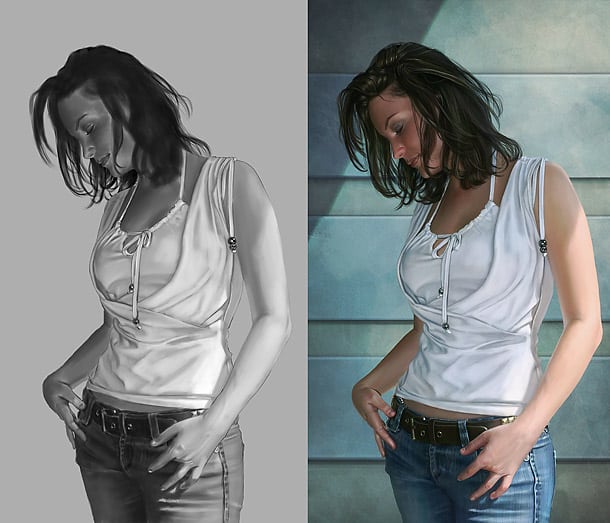
Henning Ludvigsen prefers working with shape before adding colour. “If my painting works in grey-tones, this is an important quality to a piece of art. Still, most artists prefer starting out with colours from of the first brush strokes. Figure out your own preference, and use this to your advantage.”
66) Samantha Hogg – Colour
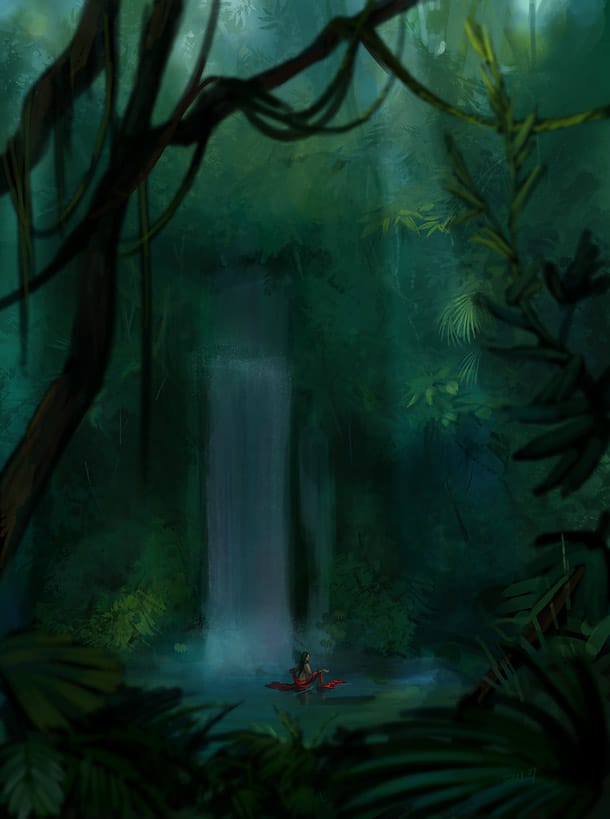
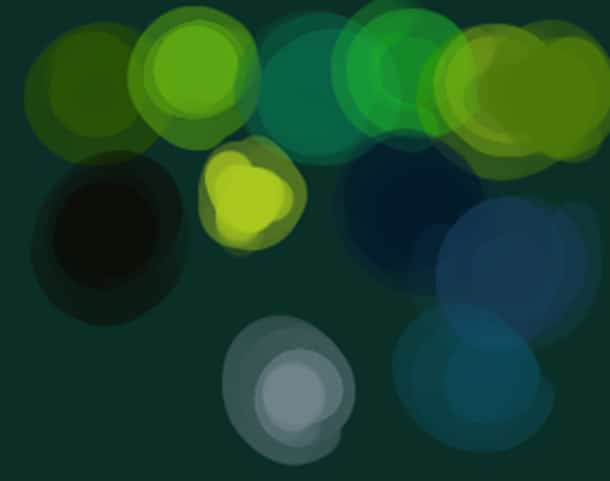
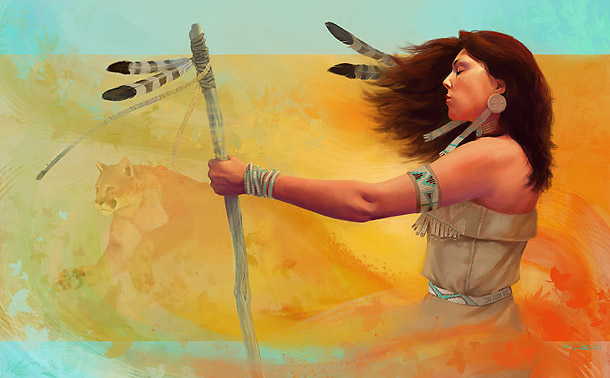
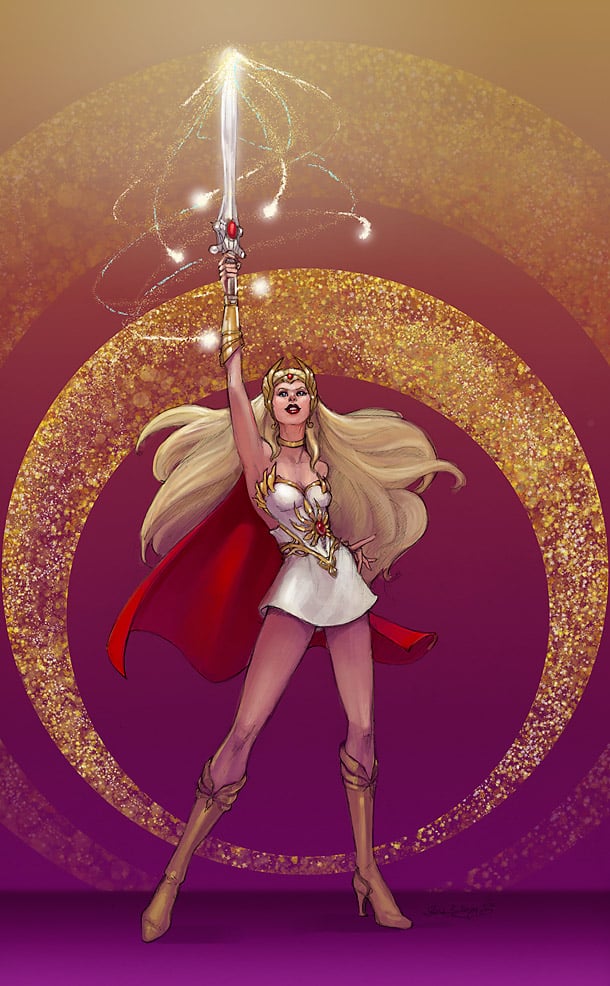
About Samantha Hogg:
I’ve been creative since I was little, and to this day, art is a passion around which I run my life. I can’t imagine doing anything else, and I’d go mad if I couldn’t draw or paint. Being able to breathe life into the visions in my head is perhaps the most rewarding thing for me as an artist, and I’m at my happiest when I’ve a pencil or a stylus in my hand.
Q1: How do you decide your colour schemes?
A1: By deciding the mood/personality of a piece and picking colours to suit.
Q2: Any favourite colour schemes?
A2: Coral and turquoise
Q3: How would you define the “wrong” use of colours?
A3: When artists use colours they ‘think’ objects should be rather than seeing what they actually are.
Q4: Clean or more dynamic colour schemes, preferences?
A4: Depends on the image, but I prefer dynamic.
Q5: How do you use colours as focal points?
A5: By concentrating saturation and contrast around key points in an image.
Q6: How do you use colours for depth?
A6: I cool and de-saturate things the further away they get
Q7: Rule #1 about skin tones?
A7: Skin doesn’t have to be peaches and browns to look believable.
Q8: What does monochromatic mean?
A8: A picture created using all the tonal ranges of one colour.
Q9: What is the best use of monochromatic colours?
A9: Monochrome is best used when light and shape are your primary concerns
Q10: Do you have a golden tip on how to control colours?
A10: Blocking in all colours at the start makes it much easier to control them throughout the painting, without doubt!
• Tips 67 – 76. Brushes and tools.
67) Linda Tso – Simple first, special later
Linda Tso usually uses the regular hard round brush with pen pressure set to opacity in the early stages, with exception for a textured background. She saves the special effects brushes for later use.
68) Marta Dahlig – Different brushes for different parts
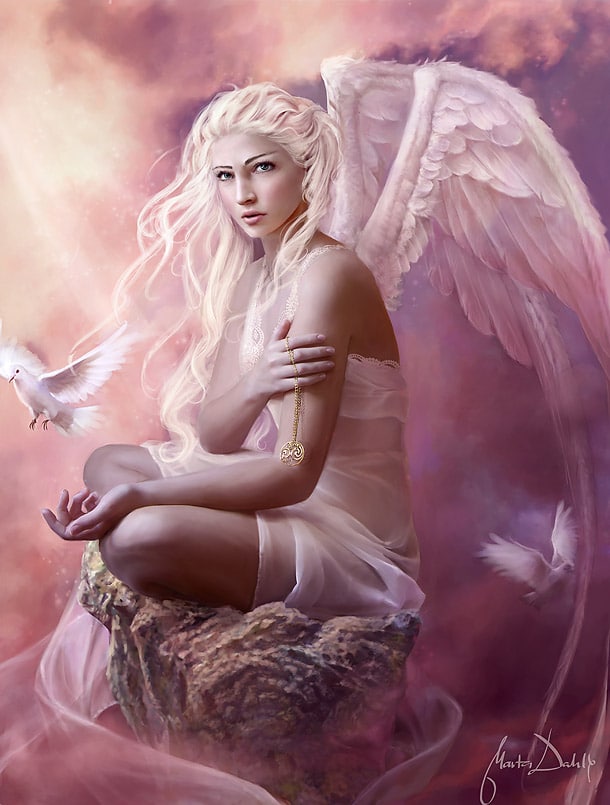
For realism, Marta Dahlig thinks it’s crucial to use different brushes and blending methods for different parts. For smooth texture less parts, use the airbrush. For textures, a hard round brush with jagged edges, and for textured blending, a spackled brush.
69) Levente Peterffy – Simulate patterns
Levente Peterffy finds brushes effective and comfortable for his work. They can easily be used to simulate patterns of clouds, grass, trees, and chains for example. I also use brushes for creating shapes.
70) Anne Stokes – Back to basics
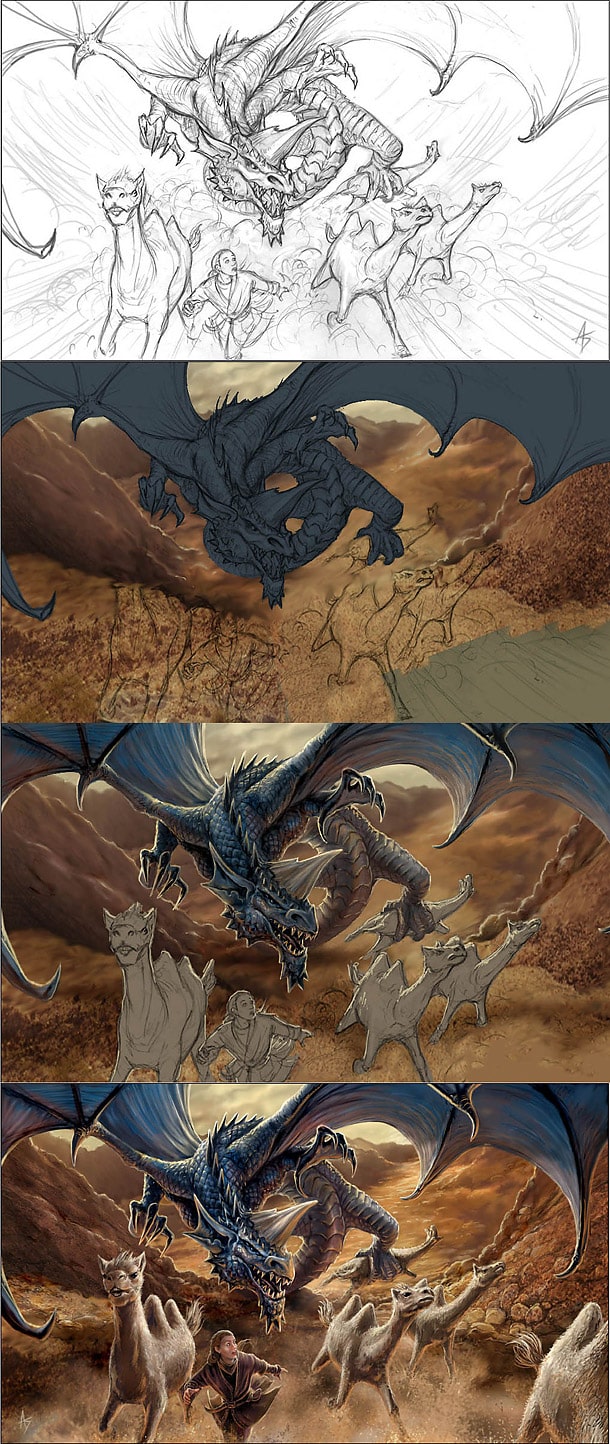
Anne Stokes usually sketch with a pencil on paper, and colours it digitally. I find this a more natural process, although the graphics tablet and pen is a great tool, you might just as well use a piece of paper.
71) Sacha Angel Diener – Paint in two stages
“Textures are great timesavers. I use custom brushes in two stages of the painting process. Firstly, for creating rock textures, mountains, grounds, and so on. Secondly for specular highlights, fabric textures, and so on”, says Sacha Angel Diener.
72) Samantha Hogg – Textured brushes
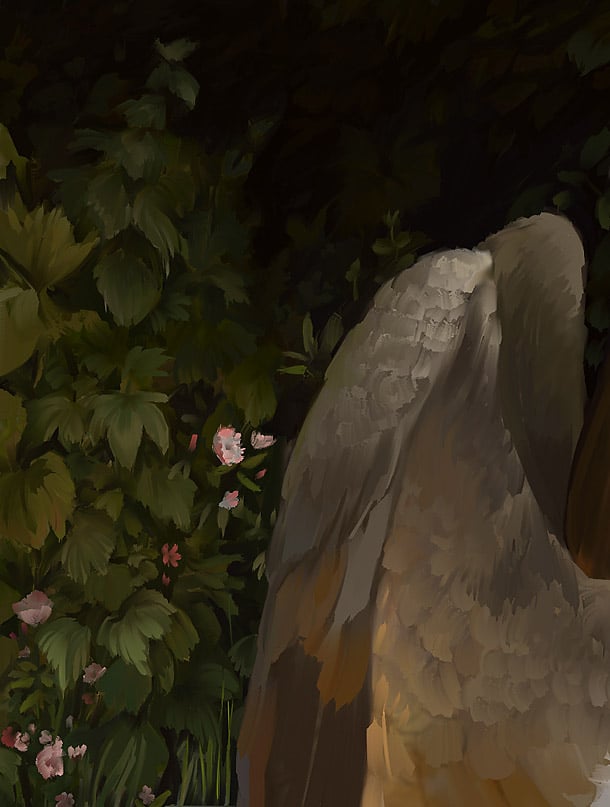
Samantha Hogg’s tip is checking the texture box in the brush options in Photoshop CS and adding just a subtle hint of texture. This is a great way to get a bit of variety to your brush strokes in Photoshop.
73) Uwe Jarling – Emulate traditional techniques
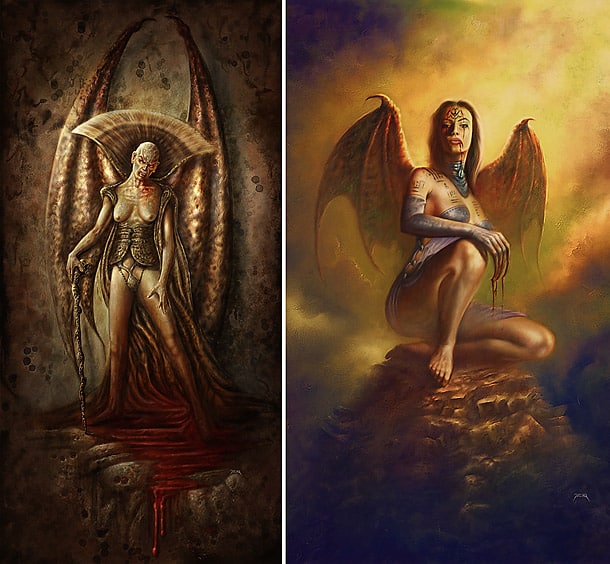
Uwe Jarling’s advice to traditional artists trying to get into digital media is using Painter, as it simulates the natural way of painting extremely well. I usually try to get a natural media look to my digital paintings.
74) Julie Dillon – Know your brushes
Familiarize yourself with a brush’s options says Julie Dillon; sometimes it only takes a few tweaks turn a brush that you’ve always written off as worthless into something amazingly helpful.
75) Simon Dominic – Important brushes
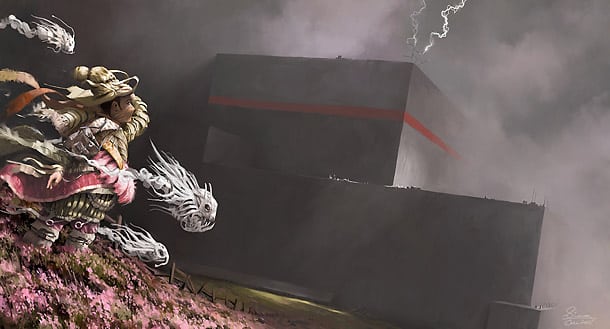
Simon Dominic used to think that the brushes an artist used wasn’t particularly important. “How wrong I was. I now know that defining a good brush set is an essential part of a digital artist’s preparation, so never be tempted to skip it.”
76) Martin Bland – Start big
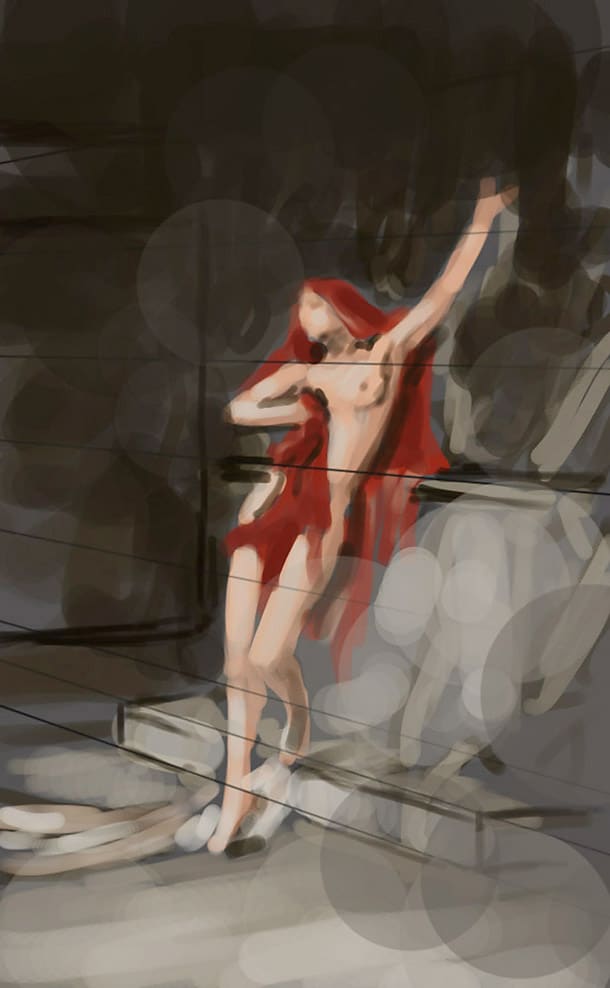
Start big, explains Martin Bland. If you start with a large brush, and work out your forms, gradually moving the size smaller and refining details, you’ll speed up your work process immensely.
• Tips 77 – 86. Industry secrets.
77) Marta Dahlig – Don’t strive for popularity
“Don’t strive for popularity or expect to be flooded with offers as soon as you make your first steps in digital art”, says Marta Dahlig. “The secret to becoming a professional lies in thousands of hours of hard work. Expose your artwork on various internet forums for extra feedback, and appreciate constructive criticism. Seek constant improvement, as the better artist you become, the more known your name will be. The myriad of business offers will only be a matter of time.”
78) Linda Tso – Develop your own style
Linda Tso tells us that you need to have the passion and drive to better your art all the time. “I don’t think there is a secret to it – just practice. It helps to develop a personal style of your own, as opposed to making art that looks like everyone else’s. Still, I do think that making connections and friends in the industry is very important than just being able to make great art.”
79) Bill Corbett – Optimize your portfolio
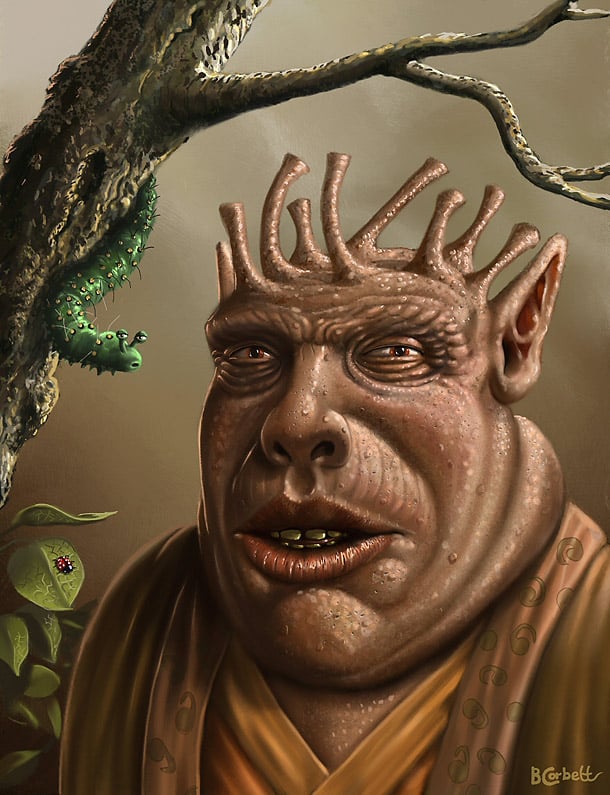
“Only show your best pictures in your portfolio”, explains Bill Corbett. “If you see something in one of your older pictures you’re not happy with, repaint it. Be prepared to do a lot of things you might not like doing, or even agreeing with. Make sure that the next job is as good as or better than the last, if you can. Remember that you are being paid when you find something boring, it’s strangely motivating!”
80) Sacha Angel Diener – Give and take
“An open secret to get your career going is to build up your network. Exchange with other artists and share experiences. Collaborations of all kind result in something an individual person never could have done. Compete but also share. There’s no better way to check your own knowledge than explaining your points understandable to someone else, and exchange critiques. An art career can take many ways so keep on pushing yourself to improve to be ready when luck knocks on your door”, says Sacha Angel Diener.
81) Samantha Hogg – Controlled creativity
Samantha Hogg thinks that knowing when and when not to ‘think outside the box’ can be important. “You might have a crazy wild idea for a job, when in actual fact your client is after something much more ‘run of the mill’. Doesn’t mean you can’t still be creative, doing things that have been done many times before and still making them stand out and unique is tougher than creating something original.”
82) Uwe Jarling – Don’t be lazy
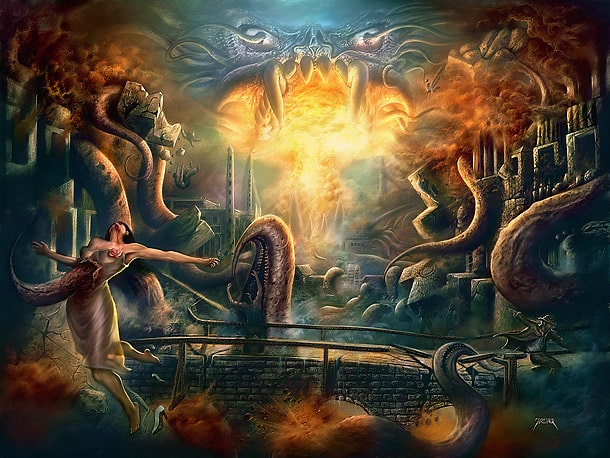
“Don’t be lazy! You have to be willing to learn something new each and every day”, says Uwe Jarling. “Working as a professional illustrator is different than doing free paintings as you have to follow art descriptions no matter how wired they are within a given time line. Never ever miss a deadline, if you are not sure if you can finish a job in time, don’t take it!”
83) Simon Dominic – Combined personal traits
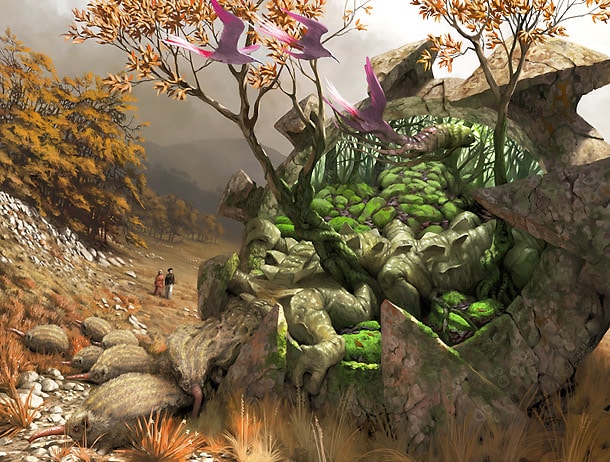
Simon Diminic is of the opinion that a simple but striking portfolio in combination with personal characteristics of honesty and integrity is a good start. “Of course, being a mature-acting professional is no substitute for being a killer artist, but neither trait is any good without the other. A willingness to live off rice and tap water for a time wouldn’t hurt either.”
84) Philip Straub – Creative thinkers
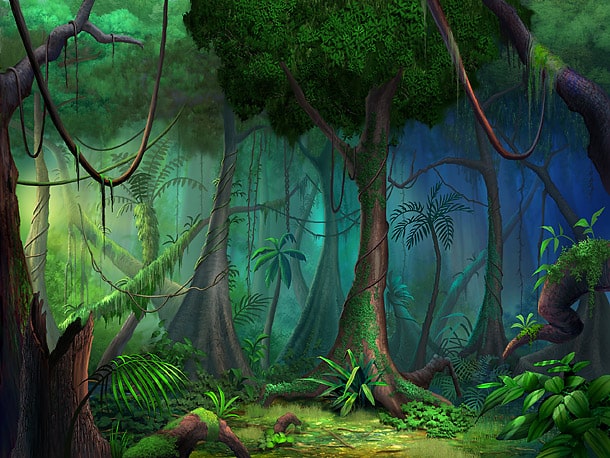
Philip Straub thinks that an artist that demonstrates desire and passion for their craft and a healthy knowledge of the histories in illustration, fine art, and concept design is a very attractive to any studio. “Charisma and the ability to communicate complex visual concepts verbally and through pre- visualization is another attractive and rare commodity. Creative thinkers, artists that not only can not only render the heck out of an image but, also have an excellent imagination are rare and therefore highly valuable to any team.”
85) Martin Bland – Practice is key
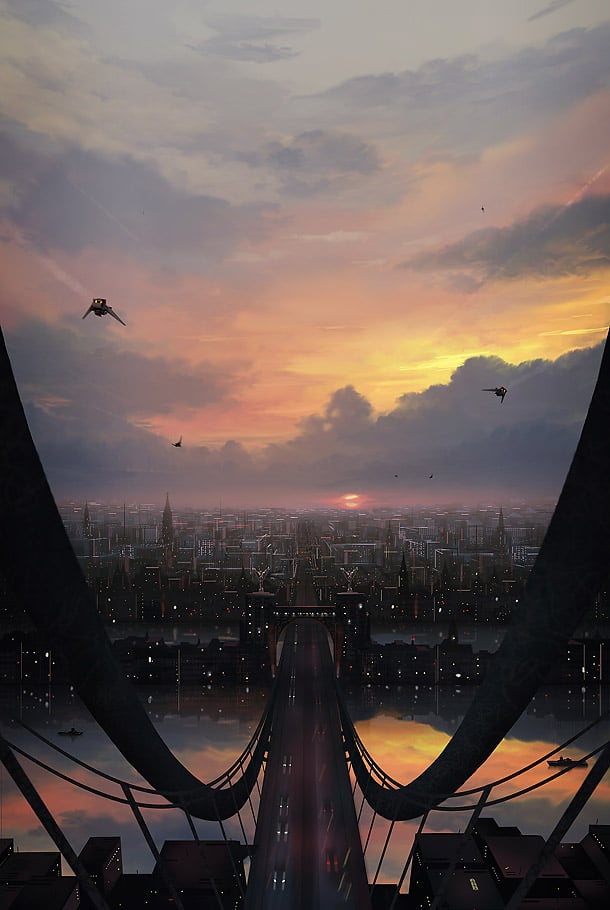
Martin Bland also thinks that a strong portfolio knocks down more doors than anything else. “If you’re good enough, the work will come, so again, practise is the key. The more you learn, the better you get, there’s no quick way of doing this. It’s about the hard slog, talent goes part way, training does the rest. After 50 finished images, you’ll be a lot closer to where you want to be.”
86) Aly Fell – Sell yourself
“To some extent we must all ‘sell’ ourselves”, explains Aly Fell. “If art is about personal expression then producing art for someone else ultimately becomes a technical exercise and little more. But this is not wrong. To be a professional artist you must redirect your personal vision into a ‘brief’, because generally the reason a client comes to you is because they ‘like’ your personal vision and skill set, and wish to see it applied to their own project.”
87) Michael Dashow – Industry secrets
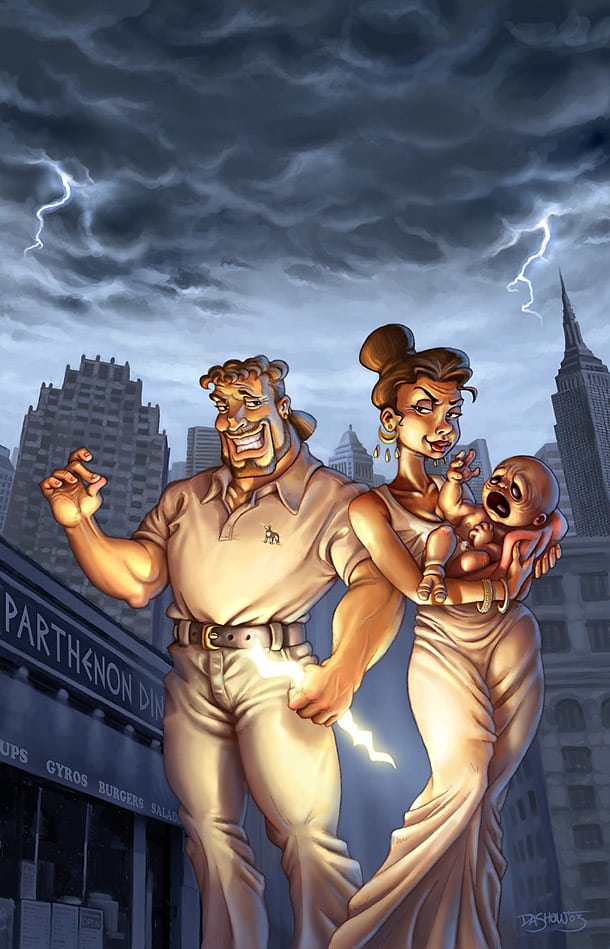
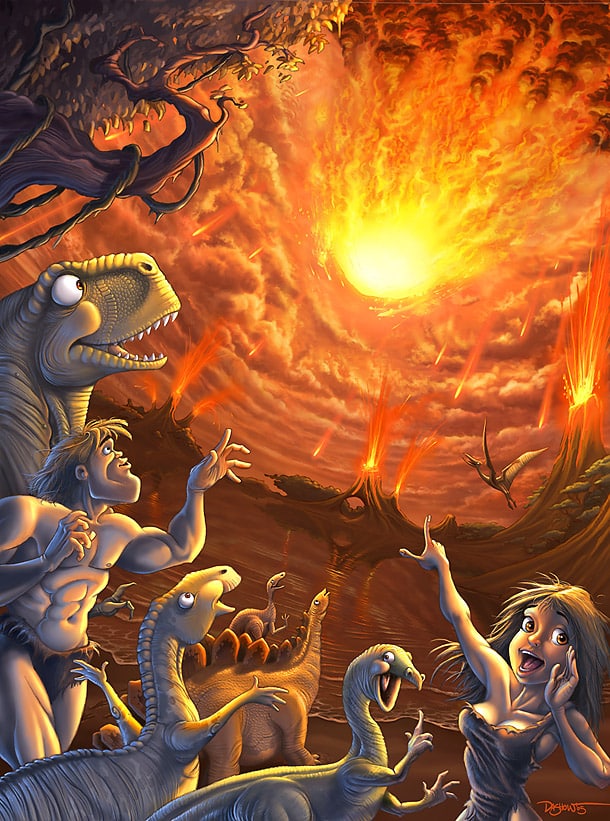
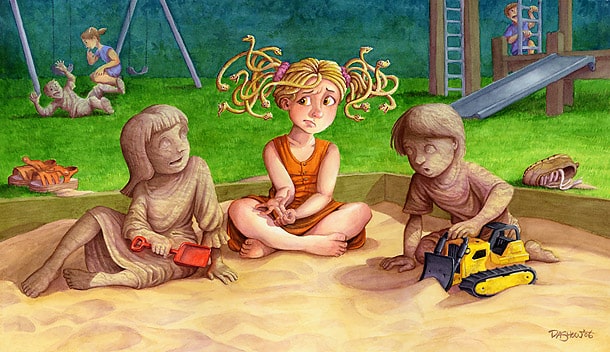
About Michael Dashow:
Michael Dashow balances his time between illustration for fun and profit and Art Directing at 3D avatar site Meez.com. He loves painting humorous science fiction, fantasy and children’s images. Michael lives in Oakland, California, USA, with his wife and newborn son.
Q1: How did you get started in illustration?
A1: I began doing covers for small press publishers. Low pay but terrific experience and portfolio material.
Q2: Any golden tips for new artists in the industry?
A2: Focus on something and do it really well: Become the go-to person for that one thing.
Q3: How do you impress your clients?
A3: Complete the assignment to spec, on time, and better than they expected.
Q4: Any handy shortcuts for saving hours of work?
A4: Good communication up front saves hours of redos from confusion and misunderstandings.
Q5: How do you deal with art slumps?
A5: Get reinvigorated by checking out other peoples’ work – that of co-workers, in books, museums, or online.
Q6: How do clients find out about you?
A6: A strong online presence, via my web site, forums, contests, etcetera.
Q7: How do you manage your deadlines?
A7: Never bite off more than you can chew. Clients appreciate honesty when you refuse an assignment for lack of time.
Q8: Any secrets to getting jobs?
A8: Find companies you want to work for and present a portfolio showcasing their specific style of artwork.
Q9: What makes an artist hit it off?
A9: Having a distinctive approach, your own unique take on things.
Q10: Any tips for applying to companies?
A10: Read the job description carefully: Ignoring requirements and not being able to follow instructions doesn’t impress.
• Tips 88 – 99. Making decisions.
88) Philip Straub – Go methodical
“The one component that is ever present in how I approach most of my work, regardless of approach, is a solid emphasis on reference gathering and thorough study of every images subject matter,” says Philip Straub. “Although I’m methodical in my basic approach to visual problem solving, I do tend to employ a number of different techniques depending on the assignment.”
89) Marta Dahlig – Tea and sweets against art blocks
Artist block is something we all know and unfortunately have to suffer from at some point. “It cannot really be avoided, as it’s a natural counterweight to the creative process” explains Marta Dahlig. “Instead of forcing myself to work; I try to relax by reading a good book with a cup of tea and lots of chocolate. It always works!”
90) Lauren K. Cannon – Digital freedom
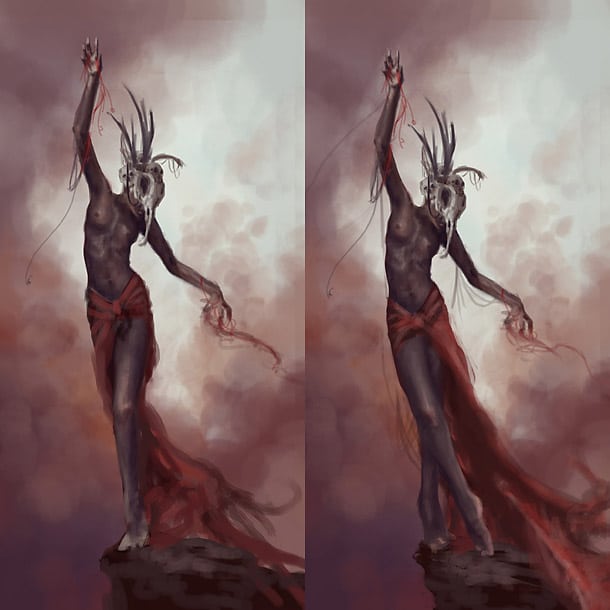
“Working digitally gives me freedom that traditional media can’t offer; the layers system and the ability to save multiple versions of the same picture let me experiment with colour, composition, and even canvas size without the fear of ruining my painting”, says Lauren K. Cannon.
91) Bill Corbett – Selective thumbnails
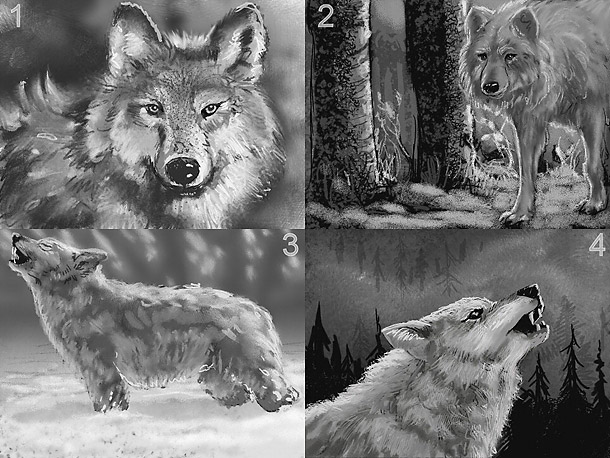
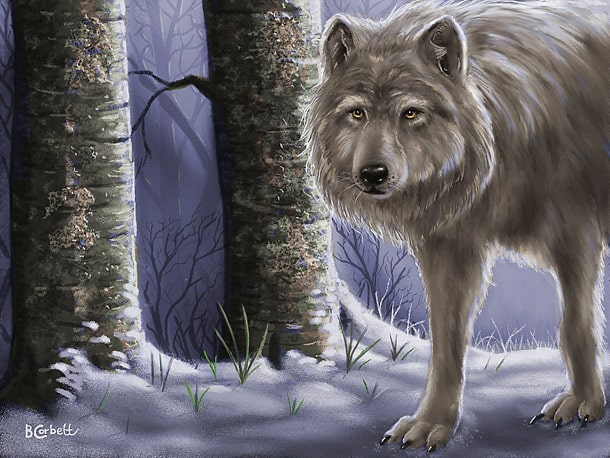
Based on what he has been asked to, Bill Corbett will make four to six thumbnails. “I might only send two of them for approval but at least in this way I can narrow down my best ideas and give the director easy choices.”
92) Sacha Angel Diener – Methodical, and trusty friends
Sacha Angel Diener approaches personal and commissioned pieces differently; “While personal pieces is pure freedom with room for randomisation, commissions are approached as methodical as possible to get the maximum out of the given timeframe. If I feel stuck, I will turn to friends whose taste I trust blindly.”
93) Samantha Hogg – Too many ideas
Samantha Hogg doesn’t suffer from artist’s block, but from quite the opposite. “I usually have too many ideas, resulting in a folder full of unfinished, but promising prospective pictures. It takes a certain degree of self control, but I’ll ban myself from even sketching anything until I finish at least one painting.”
94) Uwe Jarling – Planning is key
Uwe Jarling thinks about decisions even before he does the first brush stroke. “Planning out things like; does the scene need a dynamic composition, how does the characters interact, and do they have a background? The next step is deciding colours and light. It’s all about planning and executing what you want to do.”
95) Levente Peterffy – Scribble for ideas
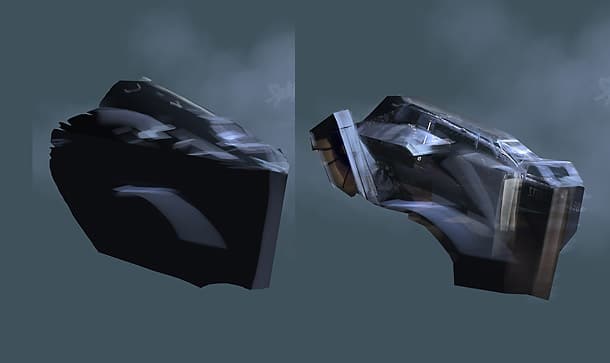
Levente Peterffy isn’t always aware of what he wants to paint, so he will simply scribble around on the canvas. When you don’t know what to do, it’s important to think outside the box, to experiment and try something different. When you feel stuck just keep scribbling and testing new colours.”
96) Anne Stokes – Give options
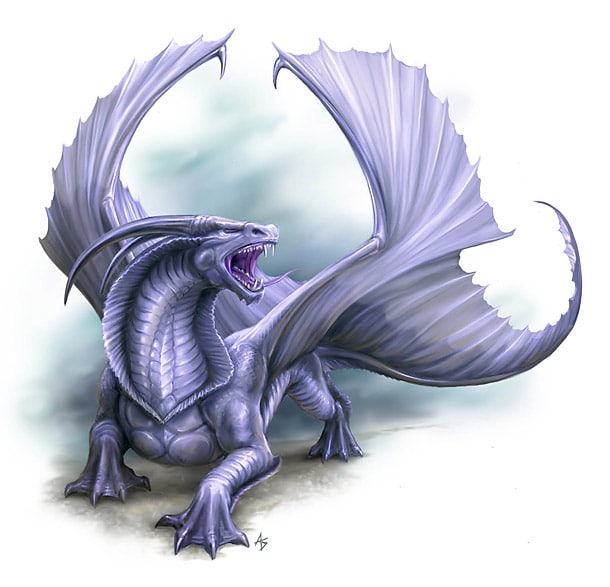


Anne Stokes works out various ideas and compositions by sketching, and submitting options to the clients before embarking on the finished painting. Some project descriptions can be very specific and others more vague. Likewise some jobs can involve designing a new creature from scratch whilst others need to stick closely to existing reference.
97) Martin Bland – Don’t stress
If you get artists block, relax and let it pass without stressing yourself out is Martin Bland’s advice. “Blocks happen to everyone at some point, there’s no real answer to it. I usually have a rough idea on what to paint, and I like to keep things fluid and work out the theme of the image as I’m going.”
98) Oz Haver – Instincts and exploration
Oz Haver makes a series of thumbnails and conceptual sketches to explore all his available options. “I explore composition, format, colours, etc. in the thumbnail process. The most important and difficult part of this process is to keep the ‘soul’ of the piece alive. I usually follow my instincts, and it works.”
99) Aly Fell – Self-deciding decisions
“The initial decisions taken when creating an image decide themselves really; you have an idea, whether your own or in the form of a clients brief. What I find is that a lot of the process becomes organic and new things present themselves as you work the idea up; the ‘wouldn’t it be good if’ ideas you say to yourself. When they come to you, use them”, says Aly Fell.
100) That ONE holy grail of tips
Don’t we all strive for the holy grail of tips? That ONE golden tip that could help us understand how things work and make us better artists? After asking a group of professional digital artists the truth seems to be that there are plenty of holy grails out there rather than just one.
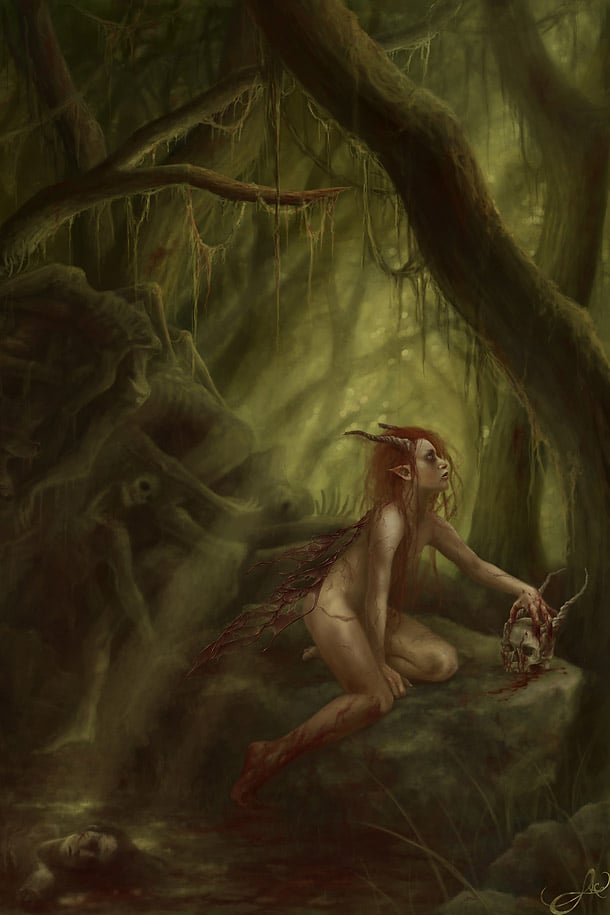
“Don’t let failure get you down. Even the most skilled artists make bad paintings – never forget that. Failure is a part of growth. No matter how badly a painting turns out; as long as you learn something from doing it, you have succeeded”, explains Lauren K. Cannon.
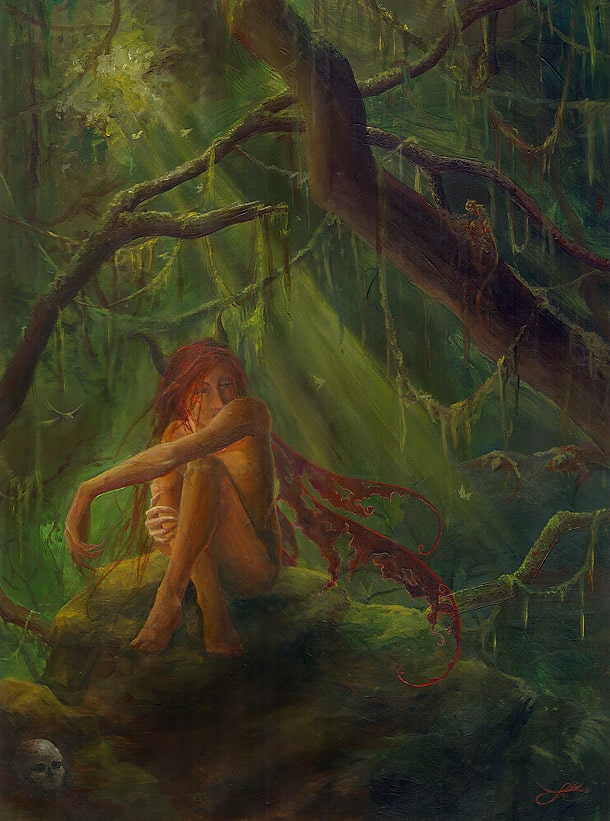
“Don’t get your hackles up over criticism! The fantasy art arena is HIGHLY competitive, and if you don’t take constructive advice, you’ll be dead in the water, doomed to make the same stupid mistakes time and again. Defensiveness kills inspiration”, says Cris Griffin.
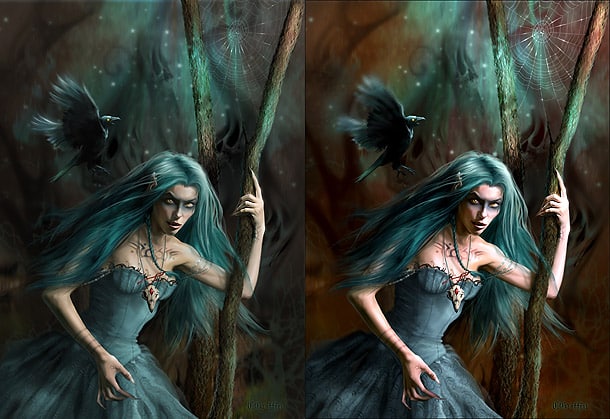
“Observe the world around you. The fantastical can be based on the most normal of things. Inspired by the extended neck of the cobra, I came up with this flying snake for the Dungeons and Dragons Monster Manual”, says Anne Stokes.
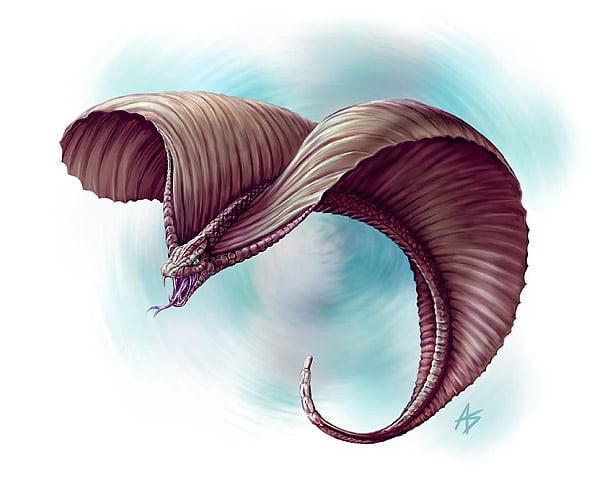
However, if your goal is to save some money, Simon Dominic’s self taught advice is not to dip your Wacom pen in your coffee. “This knowledge will undoubtedly save you money in the future”, he concludes.
